- Preferences


Medicinal Plants - PowerPoint PPT Presentation
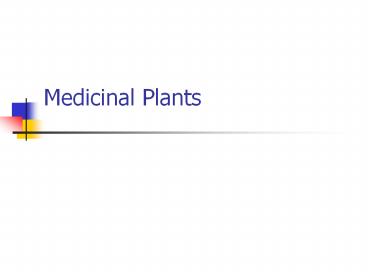
Medicinal Plants
Prehistoric times no one knows where or when plants first began to be used to treat disease accidental discovery of some new plant food that eased pain might have ... – powerpoint ppt presentation.
- No one knows where or when plants first began to be used to treat disease
- Accidental discovery of some new plant food that eased pain might have been the beginning of folk knowledge
- Early evidence the grave of a Neanderthal man buried 60,000 years ago. Pollen analysis indicated that plants buried with the corpse were all of medicinal value
- Earliest record 4,000 year old Sumerian clay tablet recorded numerous plant remedies
- Ancient Egyptian civilization had a wealth of information on medicinal plants - Ebers Papyrus 3500 yrs ago
- The Pun-tsao, a pharmacopoeia published around 1600, contained thousands of herbal cures that are attributed to the works of Shen-nung, China's legendary Emperor who lived over 4500 years ago
- Herbal medicine dates back several thousand years to the Rig-Veda, the collection of Hindu sacred verses
- This is the basis of a health care system known as Ayurvedic medicine
- One useful plant that has come from Ayurvedic tradition is snakeroot, Rauwolfia serpentina
- These ancient records indicate that in all parts of the world native peoples discovered and developed medicinal uses of local plants
- Herbal medicine of ancient Greece laid the foundations of our Western medicine
- Greek physician Hippocrates (460-377 B.C.), known as the Father of Medicine used various herbal remedies in his treatments
- Roman physician Dioscorides (1st century A.D.) wrote De Materia Medica which contained an account of over 600 species of plants with medicinal value.
- Descriptions of plants, directions on the preparation, uses, and side effects
- Many still in use
- willow bark tea - precursor to aspirin
- Some have been lost
- Greek and Roman women used silphium as an effective contraceptive for 1,000 yrs - now extinct
- Standard medical reference for 1500 years
- Little new knowledge was added in Europe during the Dark Ages
- Beginning of Renaissance in the early 15th century saw a renewal of learning
- Botanically - revival of herbalism for medicinal plants
- Coupled with the invention of the printing press in 1440 ushered in the Age of Herbals
- Beautifully illustrated books that described plants
- When to collect, useful parts
- Medicinal and culinary uses
- Also included a lot of misinformation and superstition
- Often advocated the Doctrine of Signatures
- Medicinal use recognized by distinct "signatures" visible on the plant which corresponded to human anatomy
- Red juice of bloodwort to treat blood disorders
- Lobed appearance of liverworts to aid the liver
- Belief in this concept developed independently among different cultures
- As science progressed, a dichotomy in medicine developed between practitioners of herbal medicine and regular physicians
- About this same time a similar split occurred between herbalism and scientific botany
- Many herbal remedies had a sound scientific basis
- Some became useful prescriptions drugs
- William Withering was the first to scientifically investigate a folk remedy
- His studies (1775-1785) of foxglove to treat dropsy (congestive heart failure) set standard for pharmaceutical chemistry
- Scientists began purifying the active extracts from medicinal plants
- Breakthrough in pharmaceutical chemistry came when Serturner isolated morphine from opium poppy in 1806
- First synthetic drugs were developed in the middle of the 19th century based on natural products
- Direct use of plant extracts continued to decrease in the late 19th and 20th centuries
- Today medicinal plants still contribute significantly to prescription drugs
- 25 of prescriptions written in the U.S. contain plant-derived active ingredients
- 50 if fungal products are included
- An even larger percent based on semi-synthetic or wholly synthetic ingredients originally isolated from plants
- Renewed interest in investigating plants for medically useful compounds
- Recent success of taxol from the Pacific yew tree has shown this interest is worth pursuing
- 75-90 of the rural population in developing nations rely on herbal medicine as their only health care
- Medicinal herbs are sold alongside vegetables in village markets
- Practitioners of herbal medicine undergo extensive training to learn the plants, their uses, and preparation of remedies
- Traditional herbal medicine incorporated into a modern health care system
- Blend of herbal medicine, acupuncture, and Western medicine
- Thousands of species of medicinal herbs are available for the Chinese herbalist
- Chinese apothecaries contain an incredible assortment of dried plant specimens
- Prescriptions filled with blends of specific herbs
- Traditional systems separate from Western medicine
- At universities medical students are trained in Western medicine
- Most people use traditional systems
- Ayurvedic medicine - Hindu origin
- Unani medicine - Muslim and Greek origin
- Economics also a factor - manufactured pharmaceuticals too expensive for most
- Interest in medicinal plants has focused on indigenous peoples in many parts of the world
- Ethnobotanists are spending time with local tribes and learning their medical lore before they are lost forever
- Especially important among native peoples in the tropical rain forests
- Widespread destruction threatens to eliminate thousands of species that have never been scientifically investigated for medical potential
- Erosion of tribal cultures is also a threat to the knowledge of herbal practices
- As younger members of native groups are drawn away from tribal lifestyles, oral traditions are not passed on
- Secondary plant products
- Two major categories of these compounds
- Other types of compounds are also important - essential oils
- Diverse group of compounds
- Over 3000 have been identified
- Most occur in herbaceous dicots and fungi
- Three families that are particularly known for their alkaloids Fabaceae (legume family), the Solanaceae (nightshade family) and the Rubiaceae (coffee family)
- Vary greatly in chemical structure
- Alkaloids share several characteristics
- they contain nitrogen
- they are usually alkaline
- they have a bitter taste
- Diverse effects with the most pronounced on the nervous system
- Can also have psychological effects
- Some medicinally important, some psychoactive, some poisonous
- Often a fine line between a medicinal and toxic dose
- Common alkaloids caffeine, nicotine, cocaine, morphine, quinine, ephedrine
- Affect the central nervous system - often by influencing neurotransmitters
- Categories of psychoactive cmpds
- Hallucinogens
- Depressants
- May also be narcotic
- By definition a narcotic drug induces central nervous system depression resulting in numbness, lethargy, sleep
- In current use, a narcotic is a psychoactive drug that is dangerously addictive
- Addictive cmpds elicit psychological dependence, physiological dependence, and/or tolerance
- Also widespread in the plant kingdom and second in importance as medicines or toxins
- Have sugar molecule (glyco-) is attached to the active component
- Active portion variable, sugar is glucose
- Generally categorized by the active component cyanogenic glycosides, cardiac glycosides, and saponins.
- Release cyanide (HCN) upon breakdown
- Cassava contains cyanogenic glycosides
- Seeds, pits, and bark of many members of the rose family (apples, pears, almonds, apricots, cherries, peaches, and plums) contain amygdalin, a cyanogenic glycoside
- Apricot pits are rich in amygdalin
- Ground up for preparation of laetrile, a controversial cancer treatment
- Theoretically, laetrile releases HCN only in the presence of tumor cells and selectively destroys them
- Not proven and laetrile not approved for cancer therapy in the United States
- Steroid molecule is active component
- Cardiac glycosides effect the contraction of heart muscle
- In proper doses, some are used to treat various forms of heart failure
- Best known is digitalis
- Some of the deadliest plants, such as milkweed and oleander, contain toxic levels of cardiac glycosides
- Can be highly toxic causing severe gastric irritation and hemolytic anemia
- One useful saponin is disogenin from yams (Dioscorea spp.) which can be used to synthesis various hormones such as progesterone (ingredient in birth control pills) and cortisone
- Foxglove - heart disease - digitalis
- Willow bark tea - pain, fever - aspirin
- Fever Bark Tree - malaria - quinine
- Snakeroot - hypertension - reserpine
- Aloe - burns - various glycosides
- Vinca - leukemia - vincristine
- Taxus - ovarian breast cancer - taxol
- Foxglove - Digitalis purpurea
- Extract called digitalis
- Long history as a folk remedy for congestive heart failure (dropsy)
- William Withering investigated this remedy from 1775-1785 - first scientific study of a medicinal plant
- Purple foxglove - an attractive biennial with large purple bell-shaped flowers
- Often used as a garden ornamental
- Leaves contain over 30 cardiac glycosides with digoxin and digitoxin the most medically significant
- Concentration of glycosides highest before flowering
- Leaves dried, powdered, then extracted
- Digitalis slows heart rate and increases strength of each heartbeat
- Results more blood is pumped with each contraction
- Improved circulation, decreases edema, and increases kidney output
- Effective treatment - not a cure
- Fine line between a therapeutic and toxic dose of digitalis
- Most widely used synthetic drug but origins are botanical
- Bark of willow trees (Salix spp.) used by many cultures for reducing fever and relieving pain - in form of a tea
- In 1828 salicin was first isolated and over the next decade the extraction method was refined
- Salicin is a glycoside of salicylic acid
- Salicylates occur widely in species of Salix as well as many other plants including meadowsweet (Spirea ulmaria)
- Laboratory synthesis of salicylic acid in the mid-19th century
- Salicylic acid was an inexpensive treatment for many ailments - rheumatic fever, gout, arthritis
- Had side effects - especially gastric
- In 1898 Felix Hoffman, a chemist at Bayer Company came across acetylsalicylic acid
- Effective and more palatable
- Soon given the name aspirin
- "a" is from the acetylsalicylic acid and the
- "spirin" from Spirea the plant from which salicylic acid was first isolated
- Three classic properties
- anti-inflammatory
- antipyretic (fever reducing)
- analgesic (pain relieving)
- New uses in the prevention of heart attacks, strokes, and colon cancer
- irritates the stomach
- Reye's syndrome
- Malaria known since antiquity, is still the world's most prevalent disease
- 2 to 3 million people die each year from malaria, and at least one million of these deaths are young children
- Today malaria largely confined to tropical and subtropical countries in Asia, Africa, South America, and Central America
- Caused by unicellular parasites in genus Plasmodium
- Spread by bite of Anopheles mosquito
- Parasite multiplies in liver and released in blood stream
- Invade red blood cells - multiply and rupture RBC
- Cycle repeats every few days -symptoms fever, chills, anemia....death
- Native to the eastern slopes of the Andes Mountains
- Called quina-quina by the Incas
- Several species of Cinchona
- Small evergreen trees belong to the Rubiaceae, the coffee family
- Fever reducing powers of the tree were well known to the Incas who shared knowledge with Jesuit missionaries
- Jesuits used bark to treat people with malaria
- In 1638 - Countess of Cinchon, wife of the Viceroy of Peru - miraculous recovery spread reputation of the bark
- Years later Linnaeus named the genus Cinchona in honor of the countess
- By the end of the 17th century the powdered bark of the quina-quina tree was the standard treatment for malaria
- In 1820 two French scientists isolated the alkaloid quinine
- Within a few years purified quinine was available commercially
- Demand for the bark increased even more
- 36 alkaloids in Cinchona bark - 4 have anti-malarial properties
- Quinine is the most effective
- During World War II synthetics were developed
- Today the most widely used drug for malaria is chloroquine which is less toxic and more effective than quinine
- Widespread use of chloroquine has resulted in chloroquine-resistant strains of the parasite
- Quinine used for these infections in combination with other drugs
- Quinine kills parasite in blood stream
- Also effective as a prophylactic to prevent initial infection of red blood cells in travelers
- "gin and tonic"
- Recently scientists have been investigating anti-malarial properties of weed Artemesia annua, wormwood
- Snakeroot, Rauwolfia serpentina
- "doctrine of signatures"- because long coiled roots resembled a snake, healers believed that the root could be used for treating snake bites
- For over 4000 years, Hindu healers used the root for the treatment of snakebites, insect stings, and even mental illness
- In 1952 the alkaloid reserpine was isolated from the roots
- Later dozens of alkaloids found
- The sedative effects of reserpine made it valuable as a tranquilizers - side effect was a reduction in blood pressure
- Today, this is actually the principal application of reserpine, as a treatment for hypertension
- Well known folk remedy is use of Aloe vera sap for minor burns
- Used for thousands of years as treatments for various skin ailments
- Aloe vera (A. barbadensis) the best known member of the genus but other Aloe species also used
- Thick mucilaginous sap
- Soothing effect on injured skin
- Numerous compounds including several anthraquinone glycosides collectively referred to as aloin
- Chrysophanic acid also present - possibly the compound with the greatest healing effect on skin
- Sap promotes faster healing with less scaring by stimulating cell growth
- Inhibits bacterial and fungal infection
- Compounds in the sap inhibit pain, itching, and inflammation
- In recent years the cosmetic industry has capitalized on the moisturizing effects of the sap and it can be found in a variety of skin creams, shampoos, sun screen lotions, and bath oils
- Cancer is a diverse group of diseases characterized by uncontrolled growth of abnormal cells.
- Today in the United States cancer is the leading cause of death
- Search for cancer cures is relentless
- Plants have figured prominently in folk remedies for cancer
- Over 3000 plant species had been used
- In the late 1950's National Cancer Institute and USDA began search for plants with anti-cancer properties
- Thousands of plants have been scientifically screened, and several have become standard chemotherapy for different forms of cancers
- Search is not over since only a small percentage have been screened
- Treatments for leukemia and lymphoma
- Alkaloids from Madagascar periwinkle, Catharanthus roseus (Vinca rosea)
- Used by traditional healers as treatment for diabetes
- Investigating this claim in the 1950's, scientists at the University of Western Ontario in Canada and Eli Lilly Pharmaceuticals in Indianapolis found no evidence of usefulness in treating diabetes
- Extracts from the leaves were found to be effective against leukemia cells and
- Alkaloids responsible were identified
- Vincristine and vinblastine major chemotherapeutic agents
- Vincristine has been especially effective for treating acute childhood leukemia, often with 99 remission rates
- Vinblastine has been especially effective for treating Hodgkin's disease
- Both alkaloids also used for other types of cancer
- Taxol obtained from the bark of the Pacific yew, Taxus brevifolia
- Anti-tumor properties were first discovered in the 1960's during the screening program of the National Cancer Institute
- Taxol - only recently approved
- Clinical trials showed taxol especially promising in treating ovarian and breast cancer
- Original from bark of mature Pacific yew trees, a slow-growing conifer of old-growth forests in the Pacific NW
- Concern about destruction of ancient forests
- New sources
- Other species of Taxus contain taxol
- Tissue cultures of bark cells promising
- Recently synthesized in the laboratory
- Search for medicinal plants continues
- Especially in tropical rain forests
- Time is critical before plants are lost and cultural knowledge of the plants are lost
- Same is true among native peoples everywhere includes Native Americans
PowerShow.com is a leading presentation sharing website. It has millions of presentations already uploaded and available with 1,000s more being uploaded by its users every day. Whatever your area of interest, here you’ll be able to find and view presentations you’ll love and possibly download. And, best of all, it is completely free and easy to use.
You might even have a presentation you’d like to share with others. If so, just upload it to PowerShow.com. We’ll convert it to an HTML5 slideshow that includes all the media types you’ve already added: audio, video, music, pictures, animations and transition effects. Then you can share it with your target audience as well as PowerShow.com’s millions of monthly visitors. And, again, it’s all free.
About the Developers
PowerShow.com is brought to you by CrystalGraphics , the award-winning developer and market-leading publisher of rich-media enhancement products for presentations. Our product offerings include millions of PowerPoint templates, diagrams, animated 3D characters and more.

- My presentations
Auth with social network:
Download presentation
We think you have liked this presentation. If you wish to download it, please recommend it to your friends in any social system. Share buttons are a little bit lower. Thank you!
Presentation is loading. Please wait.
To view this video please enable JavaScript, and consider upgrading to a web browser that supports HTML5 video
Medicinal Plants And Their Uses.
Published by Thomas Hunt Modified over 7 years ago
Similar presentations
Presentation on theme: "Medicinal Plants And Their Uses."— Presentation transcript:
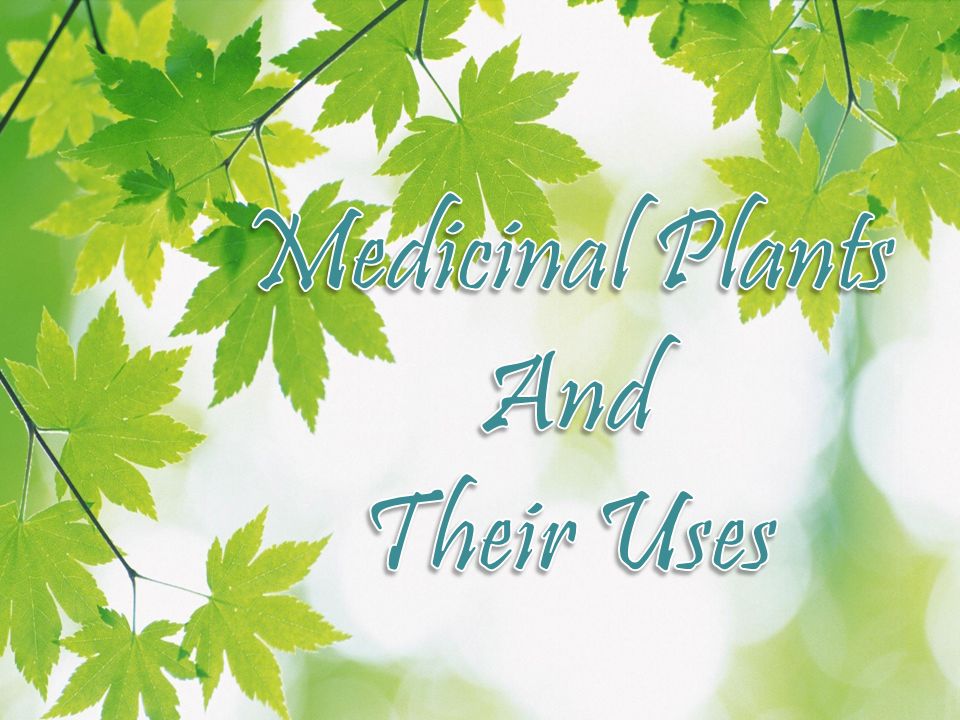
Health Benefits: 1. Prevent cancer and heart disease: Honey contains flavonoids, antioxidants which help reduce the risk of some cancers and heart disease.

Aromatherapy A therapy that uses aroma, or essential oils, to improve your quality of life.

● Natural way to take care of health ● 50 to 70 times more powerful than herbs ● Kill viruses and bacteria ● Safe benefits without the side effects ● 100%

Lesson 3 Common Communicable Diseases When you have a cold, the best thing to do is rest, eat nutritious foods, and drink plenty of fluids such as water.

25 Reasons Why You Should Start Drinking Green Tea Now PPS by: Mujtaba Ali Razmi.

25 Reasons Why You Should Start Drinking Green Tea Now BROUGHT TO YOU BY VIPUL DESAI.

Tree teas & remedies. Angiosperms Gymnosperms.

JUSCO SCHOOL SOUTH PARK PRESENTS Parts used: leaves, seeds and roots Uses: Juice of leaves used in cough, hiccups, respiratory tract disorders.

What You Need to Know Rhonda Stanton – Kaplan University.

VITA - Remove Micro-inflammation

KALAMONGGAY (Moringa) The Miracle Tree A potential life saver Nutritional analysis shows: Leaves are very high in protein and contain all of the.

Aromatherapy Nabong, Alliana Marie G. Bs Biology 3a.

Medicinal Use of Neem. Introduction of Neem Tall ever green tree Native to South Asia Nim, Nimmi, Vepa, Tamarkha Azadiracta Indica Melia Azadirachta.

American Aloe Vera Gel By Almasir.

1 2 And they shall be made to drink therein a cup the admixture of which shall be ginger.

Revnexx LLC, USA Introduction to Stevia.

LAVENDER Uses: allergies calming minor burns bruises insomnia bug bites sunburns eczema scarring rashes menstrual cramps diaper rash hair loss Replaces:

Herbal Medicine True or False. Ginseng

Growing herbs will help grow your families health.

HEALTHY HABITS FOR ALL! Eat healthy daily!. WAYS TO MAINTAIN HEALTHY EATING HABITS: Make a schedule Design a food chart from Choosemyplate.gov Buy the.
About project
© 2024 SlidePlayer.com Inc. All rights reserved.

Create moving, zooming presentations that grab attention and keep it.

Appear right alongside your content while presenting to your audience.

Make stunning interactive charts, reports, maps, infographics, and more.
You're about to create your best presentation ever
Medicinal Plants Powerpoint Templates
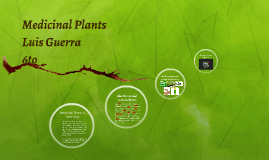
Medicinal Plants
Transcript: Medicinal Plants is Aloe Vera Thank you for your attention Aloe vera is used in traditional medicine as a multipurpose skin treatment. In Ayurvedic medicine it is called kathalai, as are extracts from agave. Early records of Aloe vera use appear in the Ebers Papyrus from the 16th century BC,18 and in Dioscorides' De Materia Medica and Pliny the Elder's Natural History - both written in the mid-first century AD. It is also written of in the Juliana Anicia Codex of 512 AD. The plant is used widely in the traditional herbal medicine of many countries. Medicinal Plants Luis Guerra 6to And here we can see images on Aloe Vera: Aloe Vera is used medicinally for : Aloe Vera is a Medicinal Plant : is a succulent plant species of the genus Aloe. It grows wild in tropical climates around the world and is cultivated for agricultural and medicinal uses. Aloe also is used for decorative purposes and grows successfully indoors as a potted plant. The cosmetic and medicinal value of the plant is debated. It is found in many consumer products.

Transcript: Location: It is found in the Northern Cape, South Africa and southern Angola Historic Uses: None Modern Day Uses: Is used to cure many things, such as liver problems and heart burn. Also works well against Osteoarthritis (joint desease). How to prepare/use it: No Info, but Not Recomended For Children! Location: The coca plant is found in South American countries such as Argentina, Bolivia, Equador, Peru and Colombia. Historic Uses: It's leaves have been chewed by South American Indians for thounsands of yearsto make them happy, like cocaine. Modern Day Use: Nowadays, people use them to prevent altitude sickness (from being to to high up). How to prepare/use it: For altitude sickness, you chew on the leaves. For cocaine, you grind the leaves to a powder and inhale it through your nose. Don't try this at home!!! Enviromental Conditions: Garlic is mostly grown in loose, dry soil and sunny locations. Most of the worlds garlic is Made in China, and China makes 20 million tonnes a year. Historic Uses: People have used garlic in China since 2000B.C. Modern Day Uses: Garlic is often put in food. Medically, it strengthens your immune system, and is very good for your health. How to prepare/use it: You can prepare garlic in many different ways, such as chopping it, mincing it, and slicing it. By: James and Luc 6B Harpagophytum procumbens, Devil's Claw Aloe Vera, Aloe Allium sativum, Garlic Location: Blackberries are found in the woods, native to eastern North America. Historic Uses: It's leaves and roots are used to cure diarrhea and dysentery. Also superb for treating wounds in mouth. Modern day uses: Blackberry tea, used to treat wounds in mouth. Used to Make: Blackberry Tea, Blackberry Wine. Location: Aloe Vera is found in countries, such as Madagascar (and other places in Africa), Jordan, and Islands in the Indian Ocean. Historic Uses: Its was used by the Ancient Romans/Greeks to treat cuts. Mordern Day Use: Aloe Vera is used as a salve for your skin, as well as a treatment for sunburn and digestive discomfort. How to prepare/use it: You break down the leaves and remove a yellow, gelatine like substance, which you rub on a wound. Thanks for Listening!!! Asarum Canadese, Ginger Medicinal Plants The Coca Plant Rubus Fructicosus, Blackberries Osteoarthritis Location: Ginger is grown as a crop in Asia, but mostly in India and China. Historic Uses: It is used for ginger soup, morning and sea sickness also used in many chinese food dishes. Modern day uses: Ginger treats nausea and arthritis, is also used for tea and many soups. Preparation: It can be dried into powder, crushed, boiled, pickled and even candied. Fun fact: It's used to make ginger ale and candy.
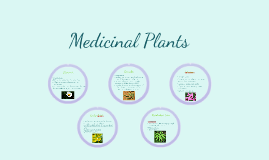
Transcript: Echinacea Pterophyta used for bronchitis, whooping cough, and menstrual cramps Treats hair loss Darkens hair Chamomile Angiosperm Petals and leaves used in herbal teas Taken as an anti-inflammatory or antioxidant Also used in treating ulcers, eczema, bruises, burns, canker sores, and hemorrhoids Medicinal Plants Angiosperm Several extracts found and used for medical purposes Extracts come from roots Common cold, anxiety, yeast infections Leaves used in tea Used to treat Dementia and Alzheimer's Thought if as a "brain herb" Extract has been found to improve blood flow Chinese herbal medicine Leaves used for tea Maidenhair Fern Angiosperm treating glaucoma, multiple sclerosis, and chemotherapy-induced nausea Leaves and extracts used to create different synthetic forms of THC Legal in 20 states and Washington DC All for medical purposes, 2 for medical and recreational use Ginkgo Biloba Cannabis

Transcript: How Do They Do It? Medicinal Plants Do Monarchs Rely on Human Activity for Survival? Incredible Research Findings Are There any Question So Far? The evolutionary biologist Jaap de Roode asserts that: "We have shown that some species of milkweed, the larva's food plants, can reduce parasite infection in the monarchs," What Are Medicinal Plants??? Other Uses For Medicinal Plants Are There Any Questions? Researchers from Emory University in Atlanta have observed and documented the ways in which the Monarch Butterfly use medicinal plants to treat disease in their offspring. Treat diseases in the human body Antibacterial Antidote Treats Asthma What is a Monarch Butterfly? Current Threat To The Monarch Butterfly Many researchers have looked into the ways in which various animal species respond to the threat of disease. Current research seems to support the idea that animals take an active role in treating disease both in themselves and their offspring. What Did They Find? Monarch butterflies are easy to distinguish from other butterflies due to the unique orange, black and white designs on their wings. The monarch butterfly is arguably the most well known species of butterfly in North America. They are renowned for their incredible beauty and their unique ability to ward off predators. Their scientific name is Danaus plexippus. It is a milkweed butterfly in the Nymphalidae family. The Nymphalidae is the largest family of butterflies with about 6,000 species found all throughout the world. With this incredible defense mechanism, how can they possibly be threatened? Thank You for Listening The Monarch Response!!! Monarchs are poisonous due to the fact that when they are caterpillars they feed on milkweed plants which contain “high levels of phytochemicals called cardenolides” These chemicals do not hurt caterpillars, but they do make them toxic even after they become butterflies, if they are consumed by other creatures. According to de Roode, when a female butterfly is infected, they will seek out and lay their eggs on a specific type of milkweed that will help ward off sickness in their offspring. This seems to suggest that monarchs have evolved by adopting practices to treat/ medicate their offspring. The observation of this phenomenon indicates that similar to humans, animal species also use medicinal plants as a form of medical treatment. Scientific Discovery Can Animals Fight Off Diseases? Parasites frequently invade the guts of caterpillars and remain with them even after they have transformed into monarch butterflies. As a result, infected female monarchs pass on these parasites to their offspring, which can cause a deadly parasitic infection. Medicinal Plants are plants that provide humans and even animals with medicine.
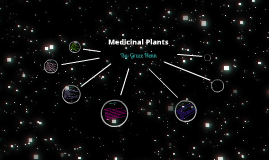
Transcript: By: Grace Henn it is cultivated and grown as a shade tree originally comes from China and is non-native to America it adapts well to different types of soil has been growning on earth for millions of years also known as "tree of life" its name "Ginkgo Biloba" and its strength is due to the chemical substances it contains the Ginkgo is proven useful in treating short term memory and early stages of Alsheimer's disease it is used in cases of hearing, cancer, diabetes, tumors, and it reduces blood clots originated from North Africa spread to fertile lands with mild climate also called "the elixir of youth" by old Egyptians derived from the Arabic word "Alloeh" meaning shining substance while "vera" in Latin means "true" widely used in the cosmetic industry treats wounds and skin infections Aloe Vera lotions and gels are used against the powerful sunlight and as a remedy against sunburns oldest species "mustard" derives from the Latin word "mustum" which means "must" appears under three different forms: white mustard, black mustard, and brown mustard mustard baths are recommended for treating headaches, colds, and coughs excellent source of proteins, and calcium Mint Plant grows spontaneously in hay fields grown from early times in ancient Egypt in the Roman Empire has a strong rhizome also known as "sparrow grass" contains vitamin B, copper, zinc, iron and many other rare nutrients controls some stomach affections, cleans the liver, lungs, and intestines of their wastes and toxins protects action on the arteries Mustard Plant Medicinal Plants Asparagus Aloe Vera Plant Ginkgo Biloba cultivated in any area with temperature-continental climate tolerates sandy soil, but needs to be planted in a sunny place needs lots of water helps liver and calms indigestion recommended in cases of asthma, bronchitis and the flu because of its antispasmodic and sedative properties can be used to make tea, mouth rinse or mint oil
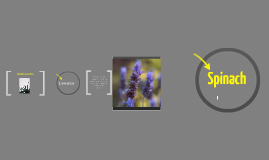
Transcript: Spinach Cardiac problems, headaches, insomnia, melancholia, dizziness or bronchial asthma can all be remedied with Lavender. Medicinal Plants and Our Daily Lives Lavender
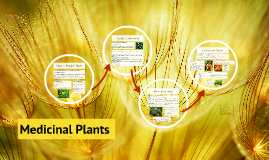
Transcript: Herbs and Cancer Debate - legalization battle over marijuana is the subject of marijuana as a form of medicine. - The medical marijuana debate has been made a great battle between states' rights and the powers of federal government because of the contradictory decisions of the state legislatures and the U.S. Supreme Court. What Is Medicinal Plant? -Medicinal plant is a type of plant that has chemical substances which can heal the diseases. -Medicinal plant is also called a herb. -Medicinal plant can be categorized into trees, shrubs, woody perennials, annuals and biennials, and climbers. -There are over 20,000 species of medicinal plants that have been used around the world. -The discoveries of new drugs from plants are still going on nowadays such as drugs against cancer, HIV/AIDS, Alzheimer’s, malaria, and pain. - Many of the chemotherapies used to fight cancer in modern medicine were developed from natural substances. - About three-quarters of the pharmaceutical compounds used today came from plants used in traditional medicine. - 76 species of Chinese plants were analyzed, 18 of which were found to significantly suppress the growth of cancer cells. - Taxanes used to treat prostate and breast cancer came from yew trees - Vinca alkaloids, which are used to treat malignant lymphomas, are made from periwinkle plants. - The anti-cancer drugs, topotecan and irinotecan, come from a component of the Camptotheca acuminata (Chinese Happy Tree). - Some of them have two sides effect. Medicinal Plants Medicinal uses: -coughs -asthma -arteriosclerosis -bronchitis -nausea -upset stomach - capture, kill, and digest animal organisms - live in areas where there is no food and have low quality of soil - they must supplement their diets with nutrients gained from digesting insects - they can attract bugs, spiders, beetles and other small creepy-crawly things Carnivorous plants are used in a variety of folk preparations and medicines. Medicinal uses: -Digestive disorders -Constipation -Urinary tract diseases -Preventing scar formation -Small pox Venus Flytrap - perennial plant that traps and eats insects - They are pressed to remove the liquid extract, which is used as an herbal remedy, - They have immune stimulant and anticancer properties. . By Praew Keeki Mook Modtanoy Advantages of medicinal plants -less side effects than pharmaceutical drugs -can be consumed without prescription -lower cost -more effective with long standing health problems that cannot be cured well by traditional medicines such as Arthritis. Common Names: Ephedra, Chinese Ephedra, ma huang Latin Name: Ephedra sinica Ephedra has been used for more than 5,000 years, especially in China and India, to treat conditions such as cold, fever, flu, headaches, asthma, wheezing, and nasal congestion. However, it is recently becoming very controversial throughout the world. Disadvantages of medicinal plants -risk of poisoning associated with wild herbs -can interact with prescribed medicine and produce dangerous side effects -risk of overdose -cannot really cure the serious illness such as broken arm or heart attack as well as conventional medicine -can cause allergies in some cases -take longer time than conventional medicine to cure diseases References Marijuana Pros - marijuana may specifically kill or stop the growth of many types of cancers. - There is an evidence that marijuana can reduce the growth of deadly brain tumors known as gliomas. - Patients receiving cannabinoids [smoked marijuana and marijuana pills] had improved immune function compared with those receiving placebo. Cons - lack of consistence and repeatable scientific data that are available to prove marijuana's medical benefits. - Smoked marijuana damages the brain, heart, lungs, and immune system. - Impairment of thinking, problem-solving skills and memory - Reduce balance and coordination - Increase risk of heart attack - Raise the risk of chronic cough and respiratory infections - Potential for hallucinations and withdrawal symptoms Ephedra Controversy Sun dews - It can trap and digest insects to obtain extra nutrients, such as nitrogen. - It have also been used in herbal medicine for a long time. Thank you Pitcher plant - It obtaining nutrients such as carbon and nitrogen. - It possess a highly developed set of compounds and secondary metabolites to aid in their survival. -These compounds could serve as a new class of anti-fungal drugs for use in human medicine. Why is that? - The plant naturally contains two alkaloids known as ephedrine and pseudoephedrine, as well as smaller amounts of related alkaloids. - The principal active ingredient, ephedrine, is a compound that can powerfully stimulate the nervous system and heart. - Recently, ephedra has been used as an ingredient in dietary supplements for weight loss, increased energy, and enhanced athletic performance. - Several cases of death caused by ephedra toxicity were reported. - In 2004, the Food and Drug Administration (FDA) banned the
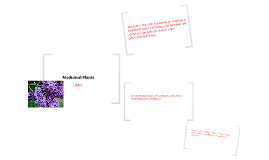
Transcript: Plants form the main ingredients of medicines in traditional systems of healing and have been the source of inspiration for several major pharmaceutical drugs. Some people are allergic to lilacs, so they use other plants to either to smell good or to make them calm down. Lilacs Lilacs have been used calm a person down, and to make things smell really good. Medicinal Plants Medicinal Plants
Explore our templates for more presentation inspiration

Sales KickOff - Rocket
Description: The sky’s the limit. Boost your new sales initiative into orbit with an engaging and compelling SKO presentation. This template features a effective sales kickoff theme that makes it easy to be engaging. Like all Prezi SKO templates, it’s fully customizable with your own information.

Quarterly Business Review - Downtown
Description: Add some color to your quarterly business review with this vibrant business presentation template. The bold visuals in this business template will make your next QBR a memorable one.

Marketing Proposal Template for Powerful Presentations | Prezi
Description: Catch the eye and engage the imagination with this cool-looking Prezi proposal template. The bold, bright design and highly dynamic theme all but guarantee success for your next sales or marketing proposal. All Prezi presentation templates are easily customized.

Customer Stories - Office
Description: Storytelling is at the heart of great service. Use this stunning, customizable business presentation template to highlight employees who do exceptional work or position your customers as the heroes of your business.
Now you can make any subject more engaging and memorable
- The Science
- Conversational Presenting
- For Business
- For Education
- Testimonials
- Presentation Gallery
- Video Gallery
- Design Gallery
- Our Customers
- Company Information
- Prezi Support
- Prezi Classic Support
- Hire an Expert
- Data Visualization
- Infographics
April 18, 2024
April 16, 2024
April 13, 2024
- Latest posts
© 2024 Prezi Inc. Terms
An official website of the United States government
The .gov means it’s official. Federal government websites often end in .gov or .mil. Before sharing sensitive information, make sure you’re on a federal government site.
The site is secure. The https:// ensures that you are connecting to the official website and that any information you provide is encrypted and transmitted securely.
- Publications
- Account settings
Preview improvements coming to the PMC website in October 2024. Learn More or Try it out now .
- Advanced Search
- Journal List
- Afr J Tradit Complement Altern Med
- v.10(5); 2013

The Role and Place of Medicinal Plants in the Strategies for Disease Prevention
Abayomi sofowora.
1 C/O Department of Pharmacognosy, Obafemi Awolowo University, Ile-Ife, Nigeria
Eyitope Ogunbodede
2 Department of Preventive and Community Dentistry, Obafemi Awolowo University, Ile-Ife, Nigeria
Adedeji Onayade
3 Department of Community Health, Obafemi Awolowo University, Ile-Ife, Nigeria
Medicinal plants have been used in healthcare since time immemorial. Studies have been carried out globally to verify their efficacy and some of the findings have led to the production of plant-based medicines. The global market value of medicinal plant products exceeds $100 billion per annum. This paper discusses the role, contributions and usefulness of medicinal plants in tackling the diseases of public health importance, with particular emphasis on the current strategic approaches to disease prevention. A comparison is drawn between the ‘whole population’ and ‘high-risk’ strategies. The usefulness of the common-factor approach as a method of engaging other health promoters in propagating the ideals of medicinal plants is highlighted. The place of medicinal plants in preventing common diseases is further examined under the five core principles of the Primary Health Care (PHC) approach. Medicinal plants play vital roles in disease prevention and their promotion and use fit into all existing prevention strategies. However, conscious efforts need to be made to properly identify, recognise and position medicinal plants in the design and implementation of these strategies. These approaches present interesting and emerging perspectives in the field of medicinal plants. Recommendations are proposed for strategising the future role and place for medicinal plants in disease prevention.
Introduction
The emphasis on the use of medicinal plants had hitherto been placed on the treatment rather than prevention of diseases. However, there exists in the literature considerable report in recent times on research work on the use of medicinal plants and their constituents in disease prevention. A World Health Organisation (WHO) Expert Group defined Traditional Medicine as the sum total of all knowledge and practices, whether explicable or not, used in diagnosis, prevention and elimination of physical, mental, or social imbalance and relying exclusively on practical experience and observation handed down from generation to generation, whether verbally or in writing ( WHO, 1976 ). For Africa, this may be extended further by including an expression, such as ‘while bearing in mind the original concept of nature which includes the material world, the sociological environment whether living or dead and the metaphysical forces of the universe’.
Over 90% of traditional medicine recipes/remedies contain medicinal plants but this paper will address, specifically, the medicinal plants that have been implicated with preventive measures in disease control strategies. However, it must be noted that only a very thin divide exists between treatment and prevention in some cases. A quick example is the fact that by treating mild elevation of blood pressure renal disease can be prevented.
What is a medicinal plant?
A medicinal plant is any plant which, in one or more of its organs, contains substances that can be used for therapeutic purposes or which are precursors for the synthesis of useful drugs. This description makes it possible to distinguish between medicinal plants whose therapeutic properties and constituents have been established scientifically, and plants that are regarded as medicinal but which have not yet been subjected to a thorough scientific study.
A number of plants have been used in traditional medicine for many years. Some do seem to work although there may not be sufficient scientific data (double-blind trials, for example) to confirm their efficacy. Such plants should qualify as medicinal plants. The term ‘crude drugs of natural or biological origin’ is used by pharmacists and pharmacologists to describe whole plants or parts of plants which have medicinal properties. A definition of medicinal plants for the purpose of this presentation should include the following ( Sofowora 2008 ; Evans, 2008 ):
- plants or plant parts used medicinally in galenical preparations (e.g. decoctions, infusions, etc.) e.g. Cascara bark;
- plants used for extraction of pure substances either for direct medicinal use or for the hemi-synthesis of medicinal compounds (e.g. hemi-synthesis of sex hormones from diosgenin obtained from Dioscorea yams);
- food, spice, and perfumery plants used medicinally, e.g. ginger;
- microscopic plants, e.g. fungi, actinomycetes, used for isolation of drugs, especially antibiotics. Examples are ergot ( Claviceps purpurea growing on rye) or Streptomyces griseus; and
- fibre plants, e.g. cotton, flax, jute, used for the preparation of surgical dressings.
The growing importance of medicinal plants can be appreciated from the economic stand point when the following facts are considered:
- Global trade in herbs is over USD 100 Billion per annum
- India and China's medicinal plant trade is about two to five billion US dollars annually
- In Germany, it is over one billion US dollars annually
- Rose Periwinkle which is endemic to Madagascar fetches US$100 million per annum
- China trades in 7,000 species and 700,000 tons of medicinal plants per annum
- India trades in 7,000 species of medicinal plants
- Morocco exports 58.7 tons of medicinal plants annually
- In the last 5 years, sales of medicinal plants doubled in China, tripled in India and grew by 25% in Europe.
A Presidential Initiative Committee on the Development, Promotion, and Commercialisation of Nigerian Herbal Medicinal Products was inaugurated on 30th May 2006 and was given a target of US$1billion sales of medicinal plants and its products within 10 years for Nigeria. Based on current research and financial investments, medicinal plants will, seemingly, continue to play an important role as a health aid ( Hoareau and DaSilva, 1999 ). The use of traditional medicine and medicinal plants in most developing countries, as a normative basis for the maintenance of good health, has been widely observed ( UNESCO, 1996 ). Furthermore, an increasing reliance on the use of medicinal plants in the industrialised societies has been traced to the extraction and development of several drugs and chemotherapeutics from these plants as well as from traditionally used rural herbal remedies ( UNESCO, 1998 ). Moreover, in these societies, herbal remedies have become more popular in the treatment of minor ailments, and also on account of the increasing costs of personal health maintenance. Indeed, the market and public demand has been so great that there is a great risk that many medicinal plants today face either extinction or loss of genetic diversity.
Preventive strategies
Health promotion, disease prevention and chronic disease management are proactive approaches to health care that stresses prevention at different points along the health care continuum. Health promotion and disease prevention strategies focus on keeping people well and preventing diseases from occurring. These strategies are referred to as primary prevention activities. Prevention is categorised into three levels (Commission on Chronic Illness, 1957):
- Health promotion/education, and
- Specific protective measures (such as immunisation)
- Secondary Prevention , which seeks to lower the rate of established cases of a disorder or illness in the population (prevalence). This level essentially involves measures that ensure early diagnosis (such as screening) and prompt management
- Disability limitation and
- Rehabilitation
The secondary and tertiary prevention activities focus on maintaining the health of individuals with chronic conditions, delaying progression of their conditions, and preventing complications.
Disease prevention should focus on strategies that reduce the risk of disease, identify risk factors, or detect disease in its early, most treatable stages. Examples of disease prevention activities include well-baby visits, immunisations, calcium and Vitamin D supplements to reduce the risk of osteoporosis, blood pressure and cholesterol assessments during annual health exams, and screening for illnesses such as breast, cervical, colorectal and prostate cancer ( Family Health Teams, 2006 ).
Public health, diet, food production and the environment are deeply interrelated, and understanding these relationships is crucial in pursuing a liveable future. Sometimes therefore, there is only a thin line between treatment and prevention of certain diseases. For example, treatment of mild hypertension will prevent many chronic renal diseases. This is also true for obesity, cancers, coronary heart diseases (CHDs) as well as diabetes and its sequelae, though these are non-communicable diseases.
The burden of healthcare and its human and financial resources requirement
In developing countries all over the world, large numbers of people die daily of preventable or curable diseases because of the lack of even simple health care. Diseases in these countries are often associated with malnutrition. As a result, those that do survive often never recover completely from the effects. The developing world is not a homogenous entity, but is made up of a variety of widely differing countries and areas which are at different stages of development. Nevertheless, these developing countries have certain features in common, including extremely limited resources, poor communications, vast distances, low levels of education, and individual and community poverty. These factors act together to keep these countries in a perpetual state of poverty. Yet, their populations continue to rise, especially in the rural regions which usually account for about 80 per cent of the total population.
Another special characteristic of the developing world is the nomadic lifestyle of some of its people. Some 50 to 100 million nomads have been estimated to be present in the world, and 90 per cent of these live in Africa or Asia. Nomads have their own needs and problems peculiar to their lifestyle. Because of their constant movement and dispersion it is difficult for conventional health services to reach these people. The striking difference between the developed and the developing world in terms of health care is reflected in the differing life expectancy of their populations. For example, according to WHO (2012) , in 2009 the life expectancy at birth was estimated at 51 years in Angola and Burkina Faso, while for Malawi it was 47 years (African countries) compared with 80 years in the United Kingdom, USA and Austria. Although the situation is improving in some African countries, this gap is still wide. Twenty-six African countries are ranked among the ‘Low Income Group’, 17 in the ‘Lower Middle Income Group’ and 9 in the ‘Upper Middle Income Group’, while only Equatorial Guinea is ranked in the ‘High Income Group’ ( WHO, 2012 ). Several of the people in Africa earn less than US$2 per day.
Any strategy for disease prevention in the developing countries, especially in Africa, must take these socioeconomic factors into account. With the abundant biodiversity of plants in the African Region and the relative lower cost of using plant derived medicines instead of processed synthetic drugs, medicinal plants should have a role to play in disease prevention strategies in Africa.
Strategies planned for traditional medicine development (First decade and second decade for Traditional Medicine in Africa)
For WHO, the main principles of the strategy for developing traditional medicine (TM) globally were thus:
- Policy: Integrate TM/CAM with national health care systems, as appropriate, by developing and implementing national TM/CAM policies and programmes
- Safety, efficacy and quality: Promote the safety, efficacy and quality of TM/CAM by expanding the knowledge-base on TM/CAM, and by providing guidance on regulatory and quality assurance standards
- Access: Increase the availability and affordability of TM/CAM, with an emphasis on access for poor populations
- Rational use: Promote therapeutically sound use of appropriate TM/CAM by providers and consumers
Strategies for development of TM in the African Region (WHO-AFRO, Brazzaville)
For WHO-AFRO, the priority interventions for the development of TM during first and second decades (i.e. 2001–2010 and 2011–2020) for African TM are as follows:
- Policy formulation;
- Capacity building;
- Research promotion;
- Support for the local production of Traditional Medicines including cultivation of medicinal plants;
- Protection of intellectual property rights and traditional medical knowledge.
Global Disease Burden
Diseases have been grouped as communicable or non-communicable based on the involvement or otherwise of a transmissible biologic disease causing agent. Until recently, communicable diseases (CDs) were the major causes of ill-health and deaths in the developing (low and middle resource) countries while non-communicable diseases were prevalent in the developed (high resource) countries, where improvement in living conditions and widespread deployment of technology had brought the CDs under control. However, the optimism that communicable diseases would be less of a health problem in the developed countries appears to have been misplaced with the appearance of new infectious diseases and re-emergence of older disease agents. Similarly, non-communicable diseases are already a major cause of morbidity and mortality as a consequence of globalisation and changing lifestyle in developing countries. Globally therefore, NCDs and CDs account for about equal quantities of morbidity and mortality, thus making all countries to currently face the double disease burden. The overall picture is, however, graver for low and middle income countries in terms of the health and socio-economic impacts.
For example, estimates of projected causes of all deaths for the African Region indicate that injuries and chronic communicable diseases accounted for 30% of all deaths for 2005. ( Figure 1 )

Projected deaths by cause, all ages, WHO African Region, 2005
Source : Moeti (2008) . Data estimated by WHO using standard methods to maximize cross-border comparability. They are not necessarily the official statistics of Member States.
Medicinal plants and disease prevention
Strategies for the prevention of communicable diseases.
Three core approaches - surveillance, outbreak investigations and immunisation - are fundamental to the prevention of communicable diseases. While medicinal plants may appear to have limited role in these approaches, several medicinal plants and traditional medicines derived from them have been used to enhance immune response to several disease agents ( Di Pierro et al. , 2012 ; Ramakrishna et al. , 2011 ).
Strategies for Prevention of Non-Communicable Diseases
The WHO 2008 to 2013 Action Plan for the Global Strategy for the Prevention and Control of NCDs articulated an intersectoral, multi-level plan to curb the rising global prevalence of NCDs with particular focus on the low and middle income countries. The overall foci of the plan were to
- map the emerging NCD epidemic and ascertain their social, economic, behavioural and political determinants;
- reduce the level of exposure of individuals and population to the common modifiable risk factors - tobacco use, unhealthy diet, physical inactivity, etc.; and
- strengthen health care for people with non-communicable diseases through the development of evidence-based norms, standards and guidelines for cost effective interventions.
Related to the third focus above, an examination of the causal chain of risk factors for NCDs ( Figure 2 ) is helpful in illuminating the potential role of medicinal plants in the prevention of NCDs. Medicinal plants have specific roles in strengthening health care opportunities for people with NCDs as well as in the management of the biologic risk factors for NCDs, especially in the early stage ( Jung et al. , 2012 ; Tan et al. , 2010 ).

Causal chain of risk factors for NCDs
The ‘whole population’ and ‘high-risk’ strategies
Two main types of approaches have been advocated in tackling major public health problems. The whole-population strategy targets the community as a whole to control the occurrence of new diseases in the population. The high-risk strategy on the other hand aims to identify individuals most at risk for a disease or outcome and then target preventive efforts at that group. These were first defined by Geoffrey Rose ( Rose, 1985 ). In promoting the use of medicinal plants in disease prevention, the whole-population strategy will have the global community as the target, whereas the high-risk strategy may focus on rural communities, especially in the developing countries. It may also on the other hand wish to focus on refining medicinal plants for use in specific disease conditions that presently defy conventional treatment, such as cancer, HIV infection and AIDS.
Utilising the Common Factor approach
The common risk factor approach aims at bringing together several health promoters working on eliminating common-risk factors as a way of preventing diseases. ( Sheiham and Walt, 2000 ) Poor Diet for example can lead to obesity, diabetes, cancers, and dental caries. Hence, nutritionists, diabetologists, oncologists, dental practitioners can work together with diet as common theme. A modified form of this approach ( Figure 3 ) can be a useful tool in engaging other health promoters, in tackling the different forms of disease, and in propagating the ideals of medicinal plants. Working with various groups, for example, appropriate medicinal plants can be incorporated into the diets to alleviate disease and suffering. This approach will enable those working to promote the use of medicinal plants to collaborate with other health promoters in areas such as malaria, diabetes, cancers, cardiovascular diseases, tuberculosis, HIV/AIDS, oral diseases, dermatological problems, etc.

The Common Factor Approach (Adapted from Sheiham and Walt, 2000 )
The Primary Health Care (PHC) Approach
Primary Health Care was defined in Alma Ata ( WHO, 1978 ) as essential care based on practical, scientifically sound and socially acceptable method and technology made universally accessible to individuals and families in the community through their full participation and at a cost they and the country can afford to maintain in the spirit of self-reliance and self-determination. The PHC philosophy recognises that each discipline contributes to health and health services delivery within a PHC model, both in a unique sense and through collaborative interdisciplinary practice.
The five core principles of the PHC approach include the following:
- Equitable distribution
- Community Participation (as issues that local people identify rather than predetermined services introduced by professionals, working within existing community organisations and local government structures, etc.)
- Focus on Prevention
- Appropriate Technology
- Multisectoral Approach - Emphasis should be made that the reason for the failure of many programmes is due to the fact that they operate in isolation, separate from the general health care structure and without the support of other relevant sectors. The need for programme cooperation and collaboration cannot be over-emphasised.
The elements (or components) of PHC include (but not limited to) Immunisation, Maternal and Child Health (MCH) Care, Essential Drugs, Food and Nutrition, Education, Common Illnesses and injury, Water and Sanitation, Endemic Infectious Diseases, Mental health and Oral health.
All African countries have adopted PHC as the over-arching strategy to achieve health for their citizens. Strategies for the promotion of medicinal plants for the prevention of diseases in Africa must therefore take into cognisance the PHC approach. It must essentially follow the 5-key principles outlined above and be integrated into the elements. Medicinal plants will be useful for Maternal and Child health care, as essential drugs, in food and nutrition, for common illnesses and injury, for endemic infectious diseases, mental health and oral health.
Medicinal plants also fit perfectly into the modelling for priorities in Primary Health Care as proposed by McDonald and Ollerenshaw (2011) . ( Figure 5 )

Model for Priority setting in Primary Health Care ( McDonald & Ollerenshaw, 2011 )
In summary, from the above considerations of available strategies, medicinal plants can play vital roles in disease prevention and their promotion and use fit into all existing prevention strategies. However, conscious efforts need to be made to properly identify, recognise and position medicinal plants in the design and implementation of these strategies. These approaches present interesting and emerging perspectives in the field of medicinal plants.
Ethnobotanical Studies on Medicinal Plants Used in Disease Prevention
In order that a comprehensive compilation of medicinal plants that can be used in disease prevention is obtained, collation of original data from the traditional custodians of such knowledge is essential ( Tan et al. , 2010 ). This is especially so in the case of African Traditional Medicine (ATM) where information is passed on from generation to generation orally about the plants used. Unlike in Chinese Traditional Medicine (CTM) and the Indian systems of medicine (Ayurveda, Unani and Sithda) where the information is available in books (and now online), a lot of the information on African traditional medicine is yet to be documented. Efforts are, however, being made by WHO-AFRO to augment the various isolated databases on medicinal plants through the provision of guidelines for documentation of herbal recipes ( WHO/AFRO 2012 ). Specific ethnobotanic surveys at village level using some of the methods described by Sofowora (2008) can be used. Such a survey by Biswas et al. (2011) on medicinal plants used for preventive medicinal purposes in Muktipara village, Chuadanga District of Bangladesh yielded 11 authentic plants including Azadirachta indica and Moringa oleifera which are quite common in Africa.
A similar survey conducted by Rahmatulla et al. (2011) among the Chakma residents of Hatimara (south) village of Rangamati district, also in Bangladesh, indicated that the mode of consumption of the plants differed to some extent. Some plants, like Spilanthes calva or Commelina paludosa , the leaves were boiled, mixed with crushed peppers and taken. The authors found that the addition of peppers did not serve any therapeutic purposes. Rather, peppers, particularly hot peppers, were added to make the dish more palatable and to impart flavour to the dish (Rahmatullah et al. , 2009; Sofowora 2008 ; Abel and Busia, 2005 ). The juice of young leaves of Centella asiatica or juice of leaves of Solena amplexicaulis was taken in the raw state. The fruits of Gymnopetalum cochinchinense were used for prevention of ulcer, and Solanum torvum as a preventive measure against leucorrhoea, typhoid and tonsillitis. The barks and seeds of Saraca were mashed and taken in the raw state as prevention for irregular menstruation and menorrhagia.
International ethnobotanical surveys sponsored by ACCT (Agence de Cooperation Culturelle et Technique) into 17 Francophone African countries and 5 into Anglophone African countries sponsored by the African Union (AU/STRC) and most of which were led by Professor Edouard Adjanohoun (Benin now France) and Professor Laurent Ake Assi have been published. These need to be searched for plants used in disease prevention as they were general ethnobotanic surveys which probably emphasised more enquiries on the use of plants to treat disease. All the data from such surveys especially the new ones need to be stored in a database where it is not yet done and protected for only authorised access.
Medicinal plants used to prevent cancer
Yasukawa (2012) has reviewed the chemopreventive activity of natural sources, foods, supplements, crude drugs and Kampo medicines (traditional Japanese herbal prescriptions). In that review, he observed that cancer chemoprevention is currently one of the most urgent projects in public health. Cancer chemoprevention is defined as the use of specific natural and synthetic chemical agents to reverse or suppress carcinogenesis and prevent the development of invasive cancers. Recently, dietary non-nutrient compounds have demonstrated important effects as chemo-preventive agents, and considerable work on the cancer chemopreventive effects of such compounds in animal models has been undertaken. Epidemiological surveys have shown that the majority of human cancers are related to two factors, namely, diet and smoking ( Banning, 2005 ; Hirayama, 1984 ). However, in the general population, daily consumption of certain foods has also been shown to have anticancer effects. This highlights the importance of environmental factors such as diet in cancer chemoprevention ( Banning, 2005 ). An understanding of the mechanisms of carcinogenesis is essential for cancer chemoprevention. Most cancer prevention research is based on the concept of multistage carcinogenesis: initiation → promotion → progression ( Pitot and Dragan (1991) ]; Morse and Stoner, 1993 ). ( Figure 6 )

Stages in Cancer Prevention Research
In contrast to both the initiation and progression stages, animal studies have indicated that the promotion stage occurs over a long time period and may be reversible, at least early on. For this reason, it is expected that inhibition of tumour promotion should be an efficient approach to cancer control ( Murakami, et al. , 1996 ). Yasukawa and his team have found in the search for potential anti-tumour promoters (cancer chemopreventive agents) from edible plants and fungi, and from crude drugs, that various triterpene alcohols and sterols and their oxygenated derivatives showed inhibitory effects on mouse ear inflammation induced by 12- O tetradecanoylphorbol-13-acetate (TPA). Primary prevention of cancer aims to avoid the development of cancer. Therefore, initiation and/or promotion of carcinogenesis should be inhibited. However, the adult population bears tumour cells that cannot revert to normal cells, and thus effective strategies to prevent cancer include avoiding continuous contact between these cells and promoters and/or aggressively inhibiting the tumour promoter effects. Therefore, to prevent cancer, it is essential to find plants that contain effective compounds (anti-tumour promoters) that delay, inhibit or block tumour promotion, which is a reversible and long-term process ( Yasukawa, 2012 ). A few examples of such plants of interest are shown below:
(Pygeum) Prunus spp (Family Rosaceae) e.g. African Prune or African Plum Tree
Prostate cancer is a very good example for chemoprevention because prostate cancer is typically slow growing and is usually diagnosed in elderly males. The extract of the bark of Pygeum africanum (Prunus Africana ) has been used in Europe as a prevention and treatment of prostate disorders including benign prostatic hypertrophy (BPH). In tissue culture, ethanolic extracts (30%) of the bark inhibited the growth of PC-3 and LNCaP cells; induced apoptosis and altered cell kinetics; down-regulated ERalpha and PKC-alpha protein, and demonstrated good binding ability to both mouse uterine oestrogen receptors and LNCaP human androgen receptors. TRAMP mice fed with P. africanum showed a significant reduction (P = 0.034) in prostate cancer incidence (35%) compared to casein fed mice (62.5%). P. africanum therefore has a significant role in regulation of prostate cancer both in vitro and in vivo and therefore may be a useful supplement for people at high risk for developing prostate cancer ( Shenouda et al, 2007 ). Katz (2002) had observed that the consumption of isoflavones found in legumes and other plants is related to lower rates of BPH and prostate cancer among Asian men ( Katz, 2002 ). The methanol extract of Prunus jamasakura Sieb. ex Koidz. inhibited two-stage carcinogenesis by DMBA/TPA in mouse skin ( Yasukawa, et al. , 1998 ). Octacosyl ferulate, from the active fraction of the plant, inhibited tumour promotion by DMBA/TPA in mouse skin (Yasukawa, et al. , 1998) ( Figure 7 ). The compound also inhibited the phosphorylation of histone by protein kinase C (PKC) in a concentration-dependent manner.

Octacosyl ferulate from Pruni Cortex
Azadirachta indica (Family Meliaceae) Neem
Over 60 different types of biochemicals including terpenoids and steroids have been purified from this plant. The anticancer properties of the plant have been studied largely in terms of its preventive, protective, tumour-suppressive, immunomodulatory and apoptotic effects against various types of cancer and their molecular mechanisms ( Paul et al, 2011 ). Triple-negative breast cancer (TNBC) accounts for 15–20% of all breast tumours and these breast tumours are usually aggressive and highly metastatic. Unfortunately, treatment options for TNBCs are limited. A novel compound, 2′-3′-dehydrosalannol (DHS) isolated from A. indica uncrushed leaves, inhibited growth and induced apoptosis in TNBC cell lines. Molecular analysis suggested that DHS inhibited cathepsin-mediated pro-survival signalling [pAKT: phosphorylated protein kinase B; BCL-2: B-cell lymphoma 2 and cyclin D1] and induced pro-apoptotic markers such as BAX [BCL-2-associated X protein] and cleaved caspase-3 ( Boopalan et al , 2012 , Malathi et al, 2002 ). Also, Neem leaves were found to inhibit tumour promotion by DMBA/TPA in mouse skin ( Arora et al. , 2011 ). Inhibition of carcinogenesis in response to neem treatment was accompanied by an over expression of signal transducer and activator of transcription 1 (STAT1) and activator protein 1 (AP-1) and decrease in nuclear factor-kappa B (NF-κB) expression ( Arora et al. , 2011 ). In a recent study, Bharati et al , (2012) evaluated the anticarcinogenic potential of aqueous A. indica leaf extract against N-nitrosodiethylamine (NDEA)-induced hepatocarcinogenesis. They reported a significant reduction in tumour incidence (33%), tumour multiplicity (42%), and increase in survival (34%) upon administration of the aqueous extract to NDEA-abused mice. Transmission and scanning electron microscopic investigations showed severe alterations in organelle organisation, cellular arrangement, degree of differentiation, cellular metabolism, and morphology of the hepatocytes. They concluded that these changes appeared to be distinctly delayed upon supplementation with the leaf extract of the plant. The results suggest that A. indica may have anticancer potential against NDEA-induced hepatic cancer.
Rosmarinus officinalis L (Family Labiatae) Rosemary
Colorectal cancer is the second leading cause of cancer death in Australia. Ngo et al. (2011) reviewed scientific evidence from all studies published from 1996 to March 2010 and which examined the protective effects of rosemary on colorectal cancer and other types of cancer. They concluded that evidence from animal and cell culture studies demonstrates the anticancer potential of rosemary extract as well as only the following constituents of it: carnosol, carnosic acid, ursolic acid, and rosmarinic acid. The reported anticancer properties were found to arise through the molecular changes in the multiple-stage process of cancer development, which are dose related and not tissue or species specific. López-Jiménez (2013) demonstrated that the anti-angiogenic activity of carnosol and carnosic acid could contribute to the chemopreventive, antitumoral and antimetastatic activities of rosemary extracts and suggested their potential in the treatment of other angiogenesis-related malignancies. Ursolic acid and carnosol were isolated from the methanol extract of Rosemary, and inhibited DMBA/TPA-promoted two-stage carcinogenesis in mouse skin ( Huang et al. , 1994 ) ( Figure 8 ).

Terpenoids from rosemary
Vitis vinifera L. (Family Vitaceae ) Grape
Dietary intake of foods rich in antioxidant properties is suggested to be cancer protective. Foods rich in antioxidant properties include grape ( Vitis vinifera ). Grape skin and seed extracts exert strong free radical scavenging and chelating activities and inhibit lipid oxidation in various food and cell models in vitro. The use of grape antioxidants are promising against a broad range of cancer cells by targeting epidermal growth factor receptor (EGFR) and its downstream pathways, inhibiting over-expression of COX-2 and prostaglandin E2 receptors, or modifying oestrogen receptor pathways, resulting in cell cycle arrest and apoptosis ( Zhou and Raffoul, 2012 ).
Filip et al. (2011) in their studies on Photoprotective effects of two natural products on ultraviolet B-induced oxidative stress and apoptosis in SKH-1 mouse skin reported that their results suggest that Calluna vulgaris and Vitis vinifera extracts might be chemopreventive candidates for reducing UV-induced risk for skin cancer.
Currants and Sultanas ( Vitis vinifera L.) are dried vine products produced in Greece. Kaliora et al. (2008) investigated the gastric cancer preventive activity of methanol extracts obtained from currants from three different origins in Greece (Vostizza, Nemea, and Messinia), as well as methanol extracts obtained from Sultanas cultivated on the island of Crete as to inhibition of cell proliferation, induction of apoptosis, and inhibition of inflammation. All extracts from 500 micrograms of dried raisins studied suppressed cell proliferation, significantly those obtained from Sultanas from Crete and currants from Nemea. The French eat higher levels of animal fat, but their incidence of heart disease remains surprisingly low. This ‘French Paradox’ is thought to be due to the benefits they derive from consuming red wine. The ethanol extract of grapes inhibited tumour promotion by DMBA/TPA in mouse skin ( Alam et al. , 2002 ). Resveratrol, in a dose-dependent manner, reduced the incidence, total number and multiplicity of visible hepatocyte nodules ( Bishayee and Dhir, 2009 ) ( Figure 9 ).

Resveratrol from grape
On the other hand, grape seeds are a rich source of monomeric, dimeric and oligomeric proanthocyanidins. The polyphenolic fraction of grape seeds suppressed tumour promotion by DMBA/TPA in mouse skin ( Bomser, et al. , 1999 ; Zhao, et al. , 1999 ).
Glycine max or G. soya (Family Leguminosae) Soya milk
Genistein, the most abundant phytoestrogen in soybeans, may bind to oestrogen receptors and perform anticancer activities. Choriocarcinoma is a malignant, trophoblastic and aggressive cancer of the placenta. Liu et al (2011) investigated the effect of genistein on the invasive potential of the choriocarcinoma cell line JAR and its underlying mechanism and found that genistein inhibited JAR cell invasion in a dose-dependent manner by a matrigel invasion assay. Their findings have significant implications for the prevention and therapy of choriocarcinoma. However, Khan et al (2012) tested the hypothesis that Soy isoflavone consumption may protect against breast cancer development. They found a lack of efficacy for breast cancer prevention and a possible adverse effect in premenopausal women. Soy milk inhibited 4-(methylnitrosamino)-1-(3-pyridyl)-1-butanoneinduced mammary carcinogenesis in rats ( Ohta et al. , 2000 ). Soy beans contain high amounts of isoflavonoids and saponins; isoflavonoids have been shown to have phytoestrogenic activity (Moliteni et al. , 1995; Katz, 2002 ).
Zingiber officinale Roscoe (Family Zingiberaceae) Ginger
Dehydrozingerone a pungent constituent of ginger is a vanillyl ketone. Structurally, it is representative of half the chemical structure of curcumin which is a promising phytochemical for the inhibition of malignant tumours, including colon cancer. Yogosawa et al. (2012) evaluated the antiproliferative effects of dehydrozingerone against HT-29 human colon cancer cells, and it was found that it dose-dependently inhibited growth at the G2/M phase with up-regulation of p21. Dehydrozingerone additionally led to the accumulation of intracellular ROS, although most radical scavengers could not clearly repress the cell-cycle arrest at the G2/M phase. Their results suggest that analogues of dehydrozingerone may be potential chemotherapeutic agents for colon cancer ( Škrovánková, 2012 ). Kurapati et al. (2012) investigated the combinatorial cytotoxic effects of Curcuma longa and Zingiber officinale on the PC-3M prostate cancer cell line. The two extracts separately showed significant inhibitory effects on colony-forming ability. However, when both the agents were tested together at the same concentrations, the combined effects were much more significant than their individual ones, suggesting the role of multiple components and their synergistic mode of actions to elicit stronger beneficial effects.
Hexahydrocurcumin, extracted from Zingiber officinale, was shown to be cytotoxic to colorectal cancer cells by Chen et al. (2011) . Treatment of SW480 cells with hexahydrocurcumin (100 microM) resulted in a massive accumulation of the cells in the G1/G0 phase of the cell cycle. This compound could prove useful in cancer prevention.
The protective and/or preventive activity of various spices against various cancers and gastric ulcer has been reviewed by Sumbul et al. (2011) and by Sung et al. (2012) .
Topical application of an ethanol extract of ginger inhibited TPA-induced tumour promotion during two-stage carcinogenesis in mouse skin ( Katiyar et al. , 1996 ). Pre-application of an ethanol extract of ginger onto the skin of SENCAR mice resulted in significant inhibition of TPA-induced epidermal ODC, COX and lipoxygenase activities as well as ODC mRNA expression in a dose-dependent manner. Topical application of [6]-gingerol inhibited tumour promotion by DMBA/TPA in mouse skin, and also suppressed TPA-induced epidermal ODC activity and inflammation ( Park et al. , 1998 ) ( Figure 10 ).

Some phenolics from Zingiber officinale
Food Supplements
Allium cepa and a. sativum ( family liliaceae) onion and garlic.
Antony and Singh (2011) have reviewed the mechanisms and targets of cancer chemoprevention by diallyl trisulfide (DATS) extracted from Allium species, while Zhou et al (2011) in a meta-analysis, in which they pooled analysis of all studies, concluded that the consumption of large amounts of Allium vegetables (in a comparison of the highest and lowest consumption groups) reduced the risk for gastric cancer (odds ratio, 0.54; 95% confidence interval, 0.43–0.65). Allium sativum (garlic) and its chemical constituents, especially Allicin, Dially Disulfide, Diallyl Trisulfide, have also been shown in recent studies to be chemopreventive agents for lung cancer and breast cancer ( Chu et al. , 2012 ; Nkrumah-Elie et al. , 2012 ; Li et al. , 2012 ). Allicin was also reported by Wang et al. (2012) to induce apoptosis in EL-4 cells in a time-and concentration-dependent manner, in which the mitochondrial pathway might play a central role.
Onion oil inhibited tumour promotion by DMBA/TPA ( Belman, 1983 ; Perchellt et al. , 1990 ) and by BP/croton oil ( Sadhana et al. , 1988 ) in mouse skin, while garlic oil inhibited tumour promotion by DMBA/TPA in mouse skin ( Belman, 1983 ; Perchellt et al. , 1990 ).
Panax ginseng C.A. Mayer (Family Araliaceae). Ginseng
Li et al. (2012) characterised a homogeneous polysaccharide (PGPW1) from the root of Panax ginseng with molecular weight as 3.5×10(5) Da. PGPW1 contained Glcucose, Galactose, Mannose and Arabinose in the molar ratio of 3.3:1.2:0.5:1.1. It dose-dependently displayed potent anti-proliferation and anti-metastatic activities. They also found that the attenuated expression of M3 muscarinic receptor on the surface of T24 cells by PGPW1 would contribute to its antitumour functions. All the data indicated the potential of its clinical application for the prevention and treatment of bladder cancer metastasis. Dong et al. (2011) have evaluated the cytotoxic potency of ginsenosides and their synthetic derivatives against a variety of cancer cells with a view to determining the structure activity relationship. The results clearly indicated that the compound with less polar chemical structures possesses higher cytotoxic activity towards cancer cells. In their own investigation on ginsenoside Rp1, Kang et al. (2011) found that it inhibited breast cancer cell proliferation and inhibited both anchorage-dependent and -independent breast cancer cell colony formation. In addition, Rp1 induced cycle arrest and apoptosis-mediated cell growth suppression. Rp1 also decreased the stability of the IGF-1R protein in breast cancer cells. They therefore suggested that Rp1 has potential as an anticancer drug and that IGF-1R is an important target for treatment and prevention of breast cancer. In their own studies, Cui et al. (2010) found that when American ginseng was tested using the azoxymethane (AOM)/dextran sulphate sodium (DSS) mouse model of ulcerative colitis, they demonstrated that ginseng can suppress colon cancer associated with colitis.
Oral administration of white and red ginseng ( Panax ginseng C.A. Mayer) suppressed colon carcinogenesis by 1,2-dimethylhydrazine (DMH) in rat (Fukushima, et al., 2001). The ginsenosides Rg3, Rg5 and Rh2 are active components in ginseng, and act either singularly or synergistically in cancer prevention ( Yun, et al., 2001 ). The methanol extract of san-chi ginseng ( P. notoginseng (Burk.) F.H. Chen) suppressed skin carcinogenesis by DMBA/TPA, liver carcinogenesis by DEN/Phenobarbital, lung carcinogenesis by 4NQO/glycerol in mice ( Konoshima et al. , 1996 ). Moreover, the methanol extract of san-chi inhibited skin carcinogenesis by NOR-1/TPA, as well as DMBA/fumonisin B1 in mice ( Konoshima et al. , 1999 ). The ginsenoside Rg1 slightly suppressed tumour promotion by DMBA/TPA in mouse skin ( Konoshima et al. , 1996 ) ( Figure 11 ).

Ginsenosides from Ginseng
Prevention and treatment of male osteoporosis due to androgen deficiency by using the medicinal plant: Eurycoma longifolia
Osteoporosis in elderly men is now becoming an alarming health issue due to its relation with a higher mortality rate compared to osteoporosis in women. Androgen deficiency (hypogonadism) is one of the major factors of male osteoporosis and it can be treated with testosterone replacement therapy (TRT). However, one medicinal plant, Eurycoma longifolia Jack ( EL ), can be used as an alternative treatment to prevent and treat male osteoporosis without causing the side effects associated with TRT. EL exerts proandrogenic effects that enhance testosterone level, as well as stimulate osteoblast proliferation and osteoclast apoptosis. This will maintain bone remodelling activity and reduce bone loss. Phytochemical components of EL may also prevent osteoporosis via its antioxidative property ( Figure 12 ). Hence, EL has the potential as a complementary treatment for male osteoporosis ( Effendy et al. , 2012 ).

Some of the chemical constituents isolated from the root of Eurycoma longifolia Jack (Source: Effendy et al., 2012 )
Plants used for the prevention of Coronary Heart Disease (CHD)
Coronary Heart Disease (CHD) is the primary contributor to morbidity and mortality worldwide. A great deal of research is now focused on identifying new therapeutic alternatives to prevent and treat CHD. The most consistent recommendations from a Public Health perspective involve multiple changes in diet and exercise. Medicinal plants are also a viable option for its prevention and treatment. Clinical and preclinical data on some medicinal plants used as dietary supplements show that they may be useful in the strategies to reduce the prevalence and mortality of CHD either in the general population or in the subsets of individuals at high risk. Such plants include, for example, artichoke, garlic, gingko, guggul, hawthorn and tea.
Artichoke Cynara scolymus L. (Family Asteraceae)
Dried leaves and lower part of the flower of this plant contain 6% phenolic acids, 5% sequiterpene latones. Three sesquiterpenes, cynaropicrin, aguerine B, and grosheimin were isolated as the active components of the artichoke extract which reduced serum triglyceride levels in olive oil-loaded mice. Aqueous and ethanolic extracts of artichoke also reduced intracellular oxidative stress stimulated by inflammatory mediators such as tumour necrosis factor alpha (TNFa) and lipopolysacchaide (LPS), as well as ox-low density lipoprotein (ox-LDL) in endothelial cells and monocytes.
Garlic ( Alium sativum , (Family Liliaceae)
Over 35 randomised clinical trials on garlic were carried out to investigate the effect of garlic on cardiovascular end points. Overall, there is evidence from randomised controlled trials (RCT) in adults that the use of garlic preparations can lead to a small but statistically significant reduction in total cholesterol levels compared with controls.
Guggul Commiphora mukul .(Jacq) Engler, (Family Burseraceae)
The Mukul Myrrh tree has been used as far back as 600 BC. According to the recent WHO Monograph for guggul, the plant is useful for the treatment of hyperlipideamia and hypercholesterolemia. The plant sterols, E- and Z-guggulesterone, are believed to be the bioactive compounds.
Strategies for combating micronutrient deficiencies: Food-based approaches
Multiple micronutrient deficiencies abound in developing countries ( Ramakrishnan, 2002 ). They are caused by inadequate intakes but genetic, parasitic and infectious diseases may also play a role ( Fishman, et al. , 2000 ; Stoltzfus, 2001 ). Micro nutrient deficiencies can have major adverse health consequences, contributing to impairment in growth, immune competence, mental and physical development, and poor reproductive outcomes ( Viteri and Gonzales, 2002 ) that cannot always be reversed by nutrition interventions. Inadequate intakes of certain micronutrients such as iodine, selenium and zinc can also be exacerbated by environmental factors, as their content in plant based foods is dependent on soil trace elements ( Gibson and Hotz, 2001 ).
There is therefore a strong need for strategies to reduce micronutrient deficiencies in developing countries. Strategies commonly used are supplementation and food-based approaches, preferably in conjunction with public health interventions such as promotion and support of breast feeding and control of infectious and parasitic diseases. Fruits and vegetables are a good source of vitamins and minerals. Faber and Laurie (2011) described a home garden strategy that integrates gardening activities with nutrition education, using community based growth monitoring as an entry point in South Africa. A positive effect was observed that Provitamin A rich vegetables and fruits contributed significantly towards achieving the recommended dietary intake of Vitamin A and other micronutrients. They concluded that home gardening is a long term strategy that contributes to combating Vitamin A and other nutritional deficiencies. This is only one of the several individual investigations reported by Thompson and Amoroso (2011) to pinpoint the fact that food based strategies are viable, sustainable and long term solutions to overcoming micronutrient malnutrition.
The strategy of using antioxidant activity of medicinal plants in prevention of diseases
Oxidative stress, caused by reactive oxygen species, plays an important role in many chronic and degenerative diseases, such as atherosclerosis, ischemic heart disease, cancer, diabetes mellitus, neurodegenerative diseases and ageing ( Azizova, 2002 ). The body's non-enzymatic antioxidant defence system includes some antioxidants, such as vitamin C, vitamin E, vitamin K and glutathione. Some synthetic antioxidants, widely used in food industry to protect food from oxidation and spoiling, are harmful because of their potential toxicity and carcinogenicity ( Botterweck et al. , 2000 ). However, natural antioxidants in fruits and vegetables are inversely related with the risk of the chronic diseases mentioned above ( Leifert and Abeywardena, 2008 ). Natural antioxidants, therefore, provide alternative strategy to prevention as well as treatment of these diseases. Phenolic compounds because of their oxidative activity are potential agents for preventing and treating many oxidative stress-related diseases. The antioxidant activity of polyphenols is mainly due to their redox properties, which allow them to act as reducing agents, hydrogen donors, singlet oxygen quenchers, metal chelators and reductants of ferryl hemoglobin ( Kratchanova et al. , 2010 ). Some medicinal plants possess more potent antioxidant activity than common dietary plants ( Cai et al. , 2004 ). Therefore, their extract, if not toxic, can serve as food additive and can be used for disease prevention ( Liu, 2003 ; Liu et al. , 2008 ).
Oral Diseases prevention with medicinal plants
Oral diseases are major health problems with dental caries and periodontal diseases among the most prevalent, preventable global infectious diseases. Oral health influences the general quality of life and poor oral health is linked to chronic conditions and systemic diseases. The association between oral diseases and the oral microbiota is well established. Although there are more than 750 species of bacteria that inhabit the oral cavity, most are normal commensals and only a few are implicated in oral diseases. The development of dental caries involves acidogenic and aciduric Gram-positive bacteria (mutans streptococci, lactobacilli and actinomycetes). Periodontal diseases have been linked to anaerobic Gram-negative bacteria ( Porphyromonas gingivalis, Actinobacillus, Prevotella and Fusobacterium ). Given the incidence of oral disease, increased resistance by bacteria to antibiotics, adverse effects of some antibacterial agents currently used in dentistry and financial considerations in developing countries, there is a need for alternative prevention and treatment options that are safe, effective and economical. While several agents are commercially available, these chemicals can alter oral microbiota and have undesirable side-effects, including tooth staining. Hence, the search for alternative products continues and natural phytochemicals isolated from plants used as traditional medicines are considered as good alternatives. Palombo (2011) concluded that there is considerable evidence that plant extracts, essential oils and purified phytochemicals have the potential to be developed into agents that can be used as preventive or treatment therapies for oral diseases. While it is encouraging to see a number of clinical trials of such products, further studies of the safety and efficacy of these agents will be important to establish whether they offer therapeutic benefits, either alone or in combination with conventional therapies, that can help to reduce the overall burden of oral diseases worldwide. In particular, studies that address issues such as adequate statistical power, blinding, standardisation of extracts or purified compounds, and quality control would be of great value ( Palombo, 2011 )
Some miscellaneous practices for the prevention of diseases with medicinal plants in Africa
According to Koumare (2008) repeated sore throat especially in children is often prevented in Mali and other African countries by using gargles made with the following plants: Spilanthes sp, Guiera senegalensis and Waltheria indica . Traore (1975) had also compiled some cultural practices of the Malian people in the prevention of dental problems with medicinal plants ( Troure, 1975 ). The efficacy of chewing sticks used for preventive dental care had been reported by Sofowora and others ( Sofowora, 2008 ). It is common knowledge among women in Africa, especially in Burkina Faso, to rub the skin of new borne babies with various medicinal plants (e.g. Pterocarpus osun ) soaked in oil to prevent them from bacterial infection as they are carried by various people. Also, because the mothers do not know whether the visitors carrying the newborn have evil intentions, the preparation with which the baby is rubbed often contains plants with occult powers to ward off any spiritual attack on the baby by visitors. Various antenatal practices using medicinal plants exist in Africa. The pregnant woman is made to bathe in some decoctions of herbs and required to drink a little of it periodically throughout the period of pregnancy to sustain her. There are also herbs to be taken just before delivery to hasten or to ease delivery. However, the use of herbs in late pregnancy could be for their oxytocic properties. Some preparations for preventing road accidents exist in Africa just as there are similar preparations utilising the occult power of herbs to eject a person from an accident vehicle before the accident ( Egbe in Yoruba). These latter preventive uses of medicinal plants involving the occult power of herbs may be beyond present capabilities of scientific experimentation to prove their efficacy.
Conclusions
Efforts must be geared towards measures that will enhance the effectiveness, efficacy and rational use of medicinal plants, especially through the integration into national, regional and local health policies and programmes. Most African countries, for example, hinge their health care system on the Primary Health Care (PHC) strategy and it is necessary to incorporate the use of medicinal plants into all the components of PHC in these countries. The following are also recommended: a) Collation of data from books, research articles, conducting of ethnobotanical surveys (because Africans have only recently started documentation of medicinal plants and their uses; oral tradition had been the mainstay) specifically to look for plants used in preventing diseases in our communities as was done in Muktipara village of Sri Lanka. Database searches on medicinal plants will also yield useful results ( Table 1 ); b) collaborative research with Institutes for preventive medicine as well as departments of preventive dentistry in teaching hospitals; and c) coordination of the research to avoid duplication of efforts.
plants with potentials in preventive medicine practice

A Health Promotion Model for Medicinal Plants (Adapted from Nutbeam, 1998 )
Acknowledgements
We would like to thank the organisers of the third CONGRESS INTERNATIONAL DE PHYTOTHERAPIE DE OUAGADOUGOU (CIPO) for inviting Professor Sofowora as a plenary lecturer to present this paper in Ouagadougou on 9th October, 2012. The assistance of the Nigeria Natural Medicine Development Agency (NNMDA) in the generation of the table of plants used in disease prevention through their virtual library as well as the provision of some original research articles by Professor (Mrs.)' Lanre Omobuwajo is hereby acknowledged.
Home Collections Medical Herbal Medicine
Herbal Medicine Presentation Templates
Get a life now with the free herbal medicine powerpoint templates and google slides themes, you can introduce your new botanical medicines and herbal shopping apps, teach clients how to schedule appointments if you have a clinical facility, and more. so, give it a try.
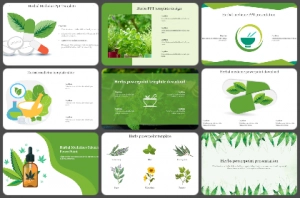
Present the Benefits of Herbal Medicine with Our Free Herbal Medicine PowerPoint Templates And Google Slides Themes!
- No Worries About Money: You can use our slides without worrying about paying more because they are royalty-free.
- Change It as You Like: You can change everything in the slides to fit what you want. Change the words, pictures, and colors easily.
- Different Looks: Our slides come in different shapes (4:3 & 16:9) and ways (landscapes & portraits), so they work with different devices and ways of showing presentations.
- Try It for Free: You can use our herbal PPT templates for free downloads to see if you like them before you buy anything.
- Easy for Everyone: Our slides are well-made and easy to use. This means anyone can make great presentations without a lot of work.
We're here to help you!
What are herbal medicine presentation templates.
These are pre-designed templates with visuals and layouts dedicated to showcasing information about herbs, medicinal plants, and their benefits. Think of them as ready-made canvases to paint your herbal knowledge on!
What kind of herbal medicine topics can I cover?
The possibilities are endless! You can explore specific herbs, focus on traditional practices, discuss natural healing programs, or even address topics like medicinal gardens or home remedies. Choose the template that best aligns with your content.
Do I need any design skills to use these herbal medicine theme templates?
Absolutely not! These templates are designed to be user-friendly. Simply pick your favorite, edit the text and images as needed, and you will have a professional-looking presentation in minutes.
Are there free templates available?
Yes! We offer a selection of free templates to check the quality and functionality. Try them out before you commit to a purchase.
What makes your templates different from others?
Our templates are crafted with unique visuals, diverse themes, and flexibility in mind. We offer royalty-free use, multiple formats and orientations, and 100% editable slides for complete customization.
Can I add my own images and data to the templates?
Of course! You can add your own research, data visualizations, and personal touches to make your presentation truly your own.

- Upload Ppt Presentation
- Upload Pdf Presentation
- Upload Infographics
- User Presentation
- Related Presentations
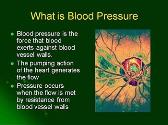

Measuring Blood Pressure
By: drdwayn Views: 1154

HIV and AIDS
By: drdwayn Views: 1961

Testicular Tumours
By: drdwayn Views: 1248

Common Musculoskeletal Problems in Primary Care
By: drdwayn Views: 759

Endometrial Cancer
By: drdwayn Views: 2759

Ayurveda Mother of All Healings
By: yourdoctors Views: 506

By: medhelp Views: 540

Supramolecular Chemistry and Homeopathy
By: JenniferDwayne Views: 881

Nutritional Aspects of Cancer Care
By: drdwayn Views: 1312

Biomechanics of the Jump Shot
By: drdwayn Views: 1211

- About : I am Dr. Dwayne Faulk
- Occupation : Medical Professional
- Specialty : Other Health Professionals
- Country : United States of America
HEALTH A TO Z
- Eye Disease
- Heart Attack
- Medications

- Customer Favourites
Medicinal Plants
Powerpoint Templates
Icon Bundle
Kpi Dashboard
Professional
Business Plans
Swot Analysis
Gantt Chart
Business Proposal
Marketing Plan
Project Management
Business Case
Business Model
Cyber Security
Business PPT
Digital Marketing
Digital Transformation
Human Resources
Product Management
Artificial Intelligence
Company Profile
Acknowledgement PPT
PPT Presentation
Reports Brochures
One Page Pitch
Interview PPT
All Categories

- You're currently reading page 1
Stages // require(['jquery'], function ($) { $(document).ready(function () { //removes paginator if items are less than selected items per page var paginator = $("#limiter :selected").text(); var itemsPerPage = parseInt(paginator); var itemsCount = $(".products.list.items.product-items.sli_container").children().length; if (itemsCount ? ’Stages’ here means the number of divisions or graphic elements in the slide. For example, if you want a 4 piece puzzle slide, you can search for the word ‘puzzles’ and then select 4 ‘Stages’ here. We have categorized all our content according to the number of ‘Stages’ to make it easier for you to refine the results.
Category // require(['jquery'], function ($) { $(document).ready(function () { //removes paginator if items are less than selected items per page var paginator = $("#limiter :selected").text(); var itemsperpage = parseint(paginator); var itemscount = $(".products.list.items.product-items.sli_container").children().length; if (itemscount.
- Anatomy (16)
- Business Slides (19)
- Company Profiles (3)
- Complete Decks (16)
- Concepts 1 (1)
- Data and Statistics (2)
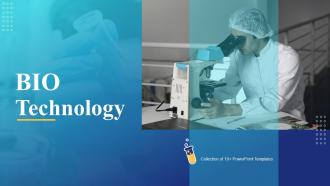
Got any suggestions?
We want to hear from you! Send us a message and help improve Slidesgo
Top searches
Trending searches

17 templates

9 templates

tropical rainforest
29 templates

summer vacation
19 templates

islamic history
36 templates

american history
70 templates
Plants Presentation templates
Plants are always a great idea having them at home brings many benefits: they clean the environment, they take away stress, taking care of them helps to work on concentration and, of course, they are a wonderful decorative element. if you want your presentations to be decorated with plants and have that calming effect, just try using one of our google slides and powerpoint templates about plants..
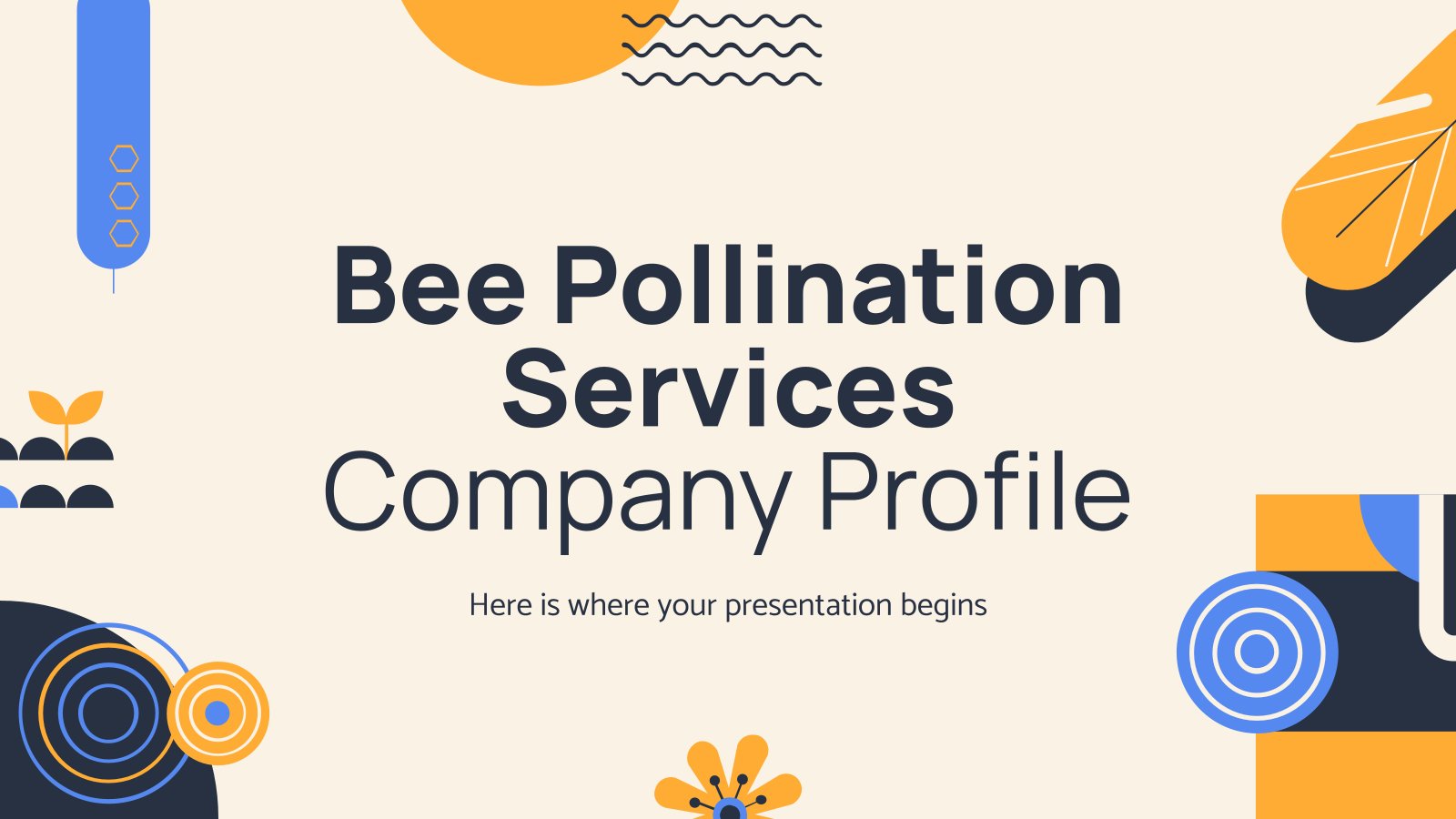
Bee Pollination Services Company Profile
Download the "Bee Pollination Services Company Profile" presentation for PowerPoint or Google Slides. Presenting a comprehensive company profile can be a game-changer for your business. A well-crafted profile connects with potential clients and vendors on another level, giving them a deep understanding of your organization. This company profile template can...

Premium template
Unlock this template and gain unlimited access
Cute Little Plant Pots Stickers Planner for Pre-K Teachers
Children are our future! In kindergarten, they learn new basic but essential things before they go to elementary school, such as learning alphabet, number counting, drawing… and even more important, they start socializing with others that are not their own family. You are a pre-K teacher who will lead them...
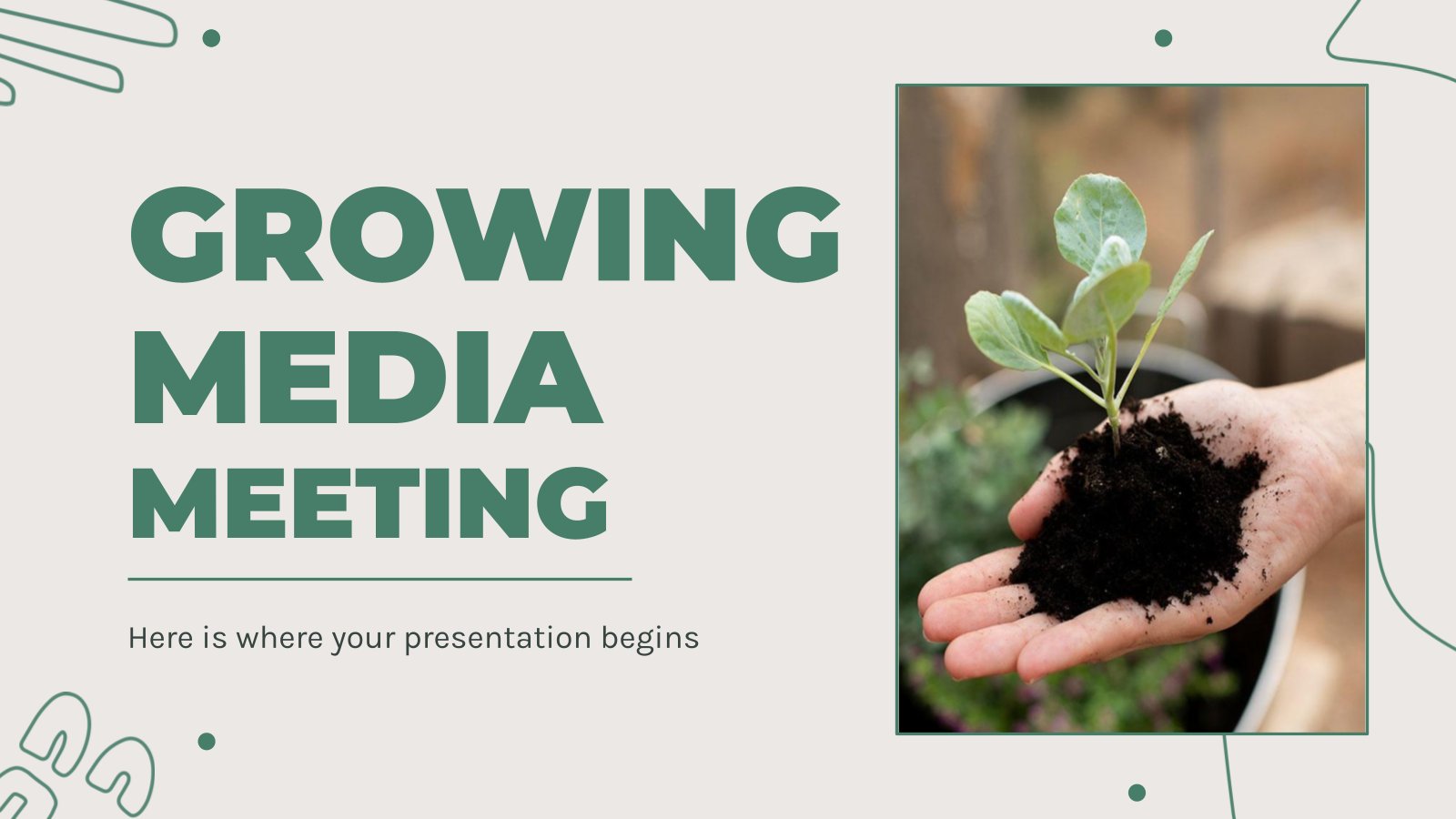
Growing Media Meeting
Download the "Growing Media Meeting" presentation for PowerPoint or Google Slides. Gone are the days of dreary, unproductive meetings. Check out this sophisticated solution that offers you an innovative approach to planning and implementing meetings! Detailed yet simplified, this template ensures everyone is on the same page, contributing to a...

Gardening Activities for Elementary
Not only is gardening a relaxing exercise, but especially for kids, an exciting one - who wasn’t fascinated the first time they planted a seed and watched a little sprout and then leaves appear? This presentation includes a number of gardening activities for children already proposed, with ideas on how...

Modern Plants Portfolio
Are you a professional gardener? Or perhaps a photographer? This portfolio and nature and in total sync. Its relatively minimalist design is complemented by several photos of plants, which is like a new breath of life to the contents of each slide. Speaking of which, you can add data such...

Career Technical Subject for Middle School - 6th Grade: Agriculture, Food, & Natural Resources
Nature has everything we need to survive, but we need to know it well to be able to see everything it can give us. Agriculture can be a very interesting job opportunity, so, with this template about agriculture, nature and natural resources oriented to the world of work, you can...

Science Subject for Pre-K: Observing How Plants Grow
This is probably one of our top templates of this year, at least when it comes to beauty! It's gorgeous: just take a look at the slides and its illustrations and backgrounds. Don't you suddenly feel the urge to decorate your house with plants? In actuality, this template has been...

Science Subject for Elementary - 2nd Grade: Plants
Plants are more than decorative elements that you have at home: they're living beings, just like you and me! Since this template is intended for educational purposes and, especially, for kids, we have made some decisions that you'll love. Firstly, each slide is like the page of a notebook. Secondly,...

Plants Care for Kids Workshop
Plants are life beings that need lots of care and love! There’s nothing more beautiful than a room full of green, thriving plants. But how to know what each of them needs? Just like humans, each plant is different: some need more sun, some need more water, some thrive with...
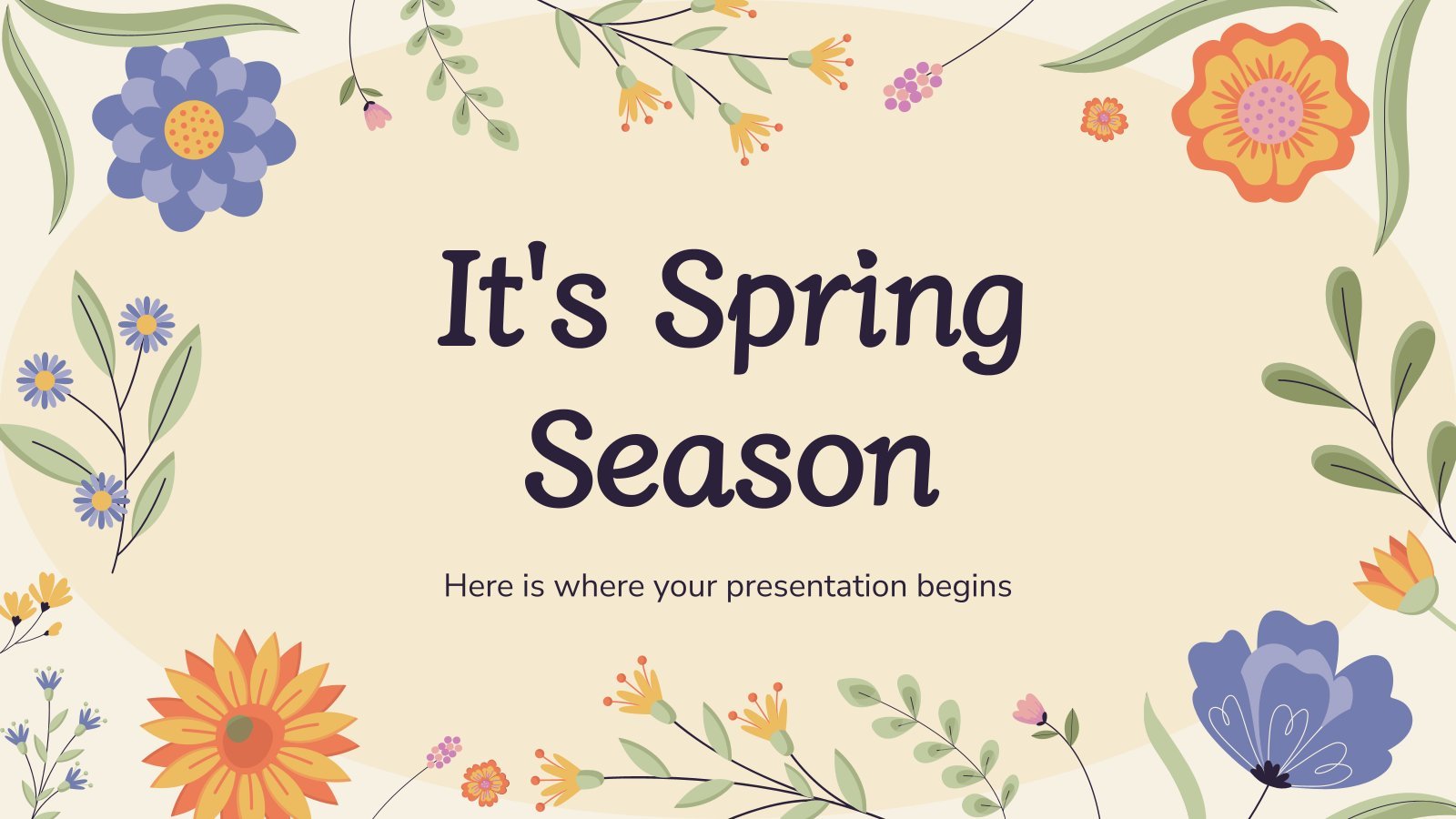
It's Spring Season
Download the "It's Spring Season" presentation for PowerPoint or Google Slides and start impressing your audience with a creative and original design. Slidesgo templates like this one here offer the possibility to convey a concept, idea or topic in a clear, concise and visual way, by using different graphic resources....

Pical Platform Business Plan
This business plan presentation has many different sections that are quite effective; talk about the market, your sales plan, promotion, members of the team, distribution channels… With this slide deck, it’s just natural that you succeed!

Design Inspiration Vision Board
Download the "Design Inspiration Vision Board" presentation for PowerPoint or Google Slides and start impressing your audience with a creative and original design. Slidesgo templates like this one here offer the possibility to convey a concept, idea or topic in a clear, concise and visual way, by using different graphic...
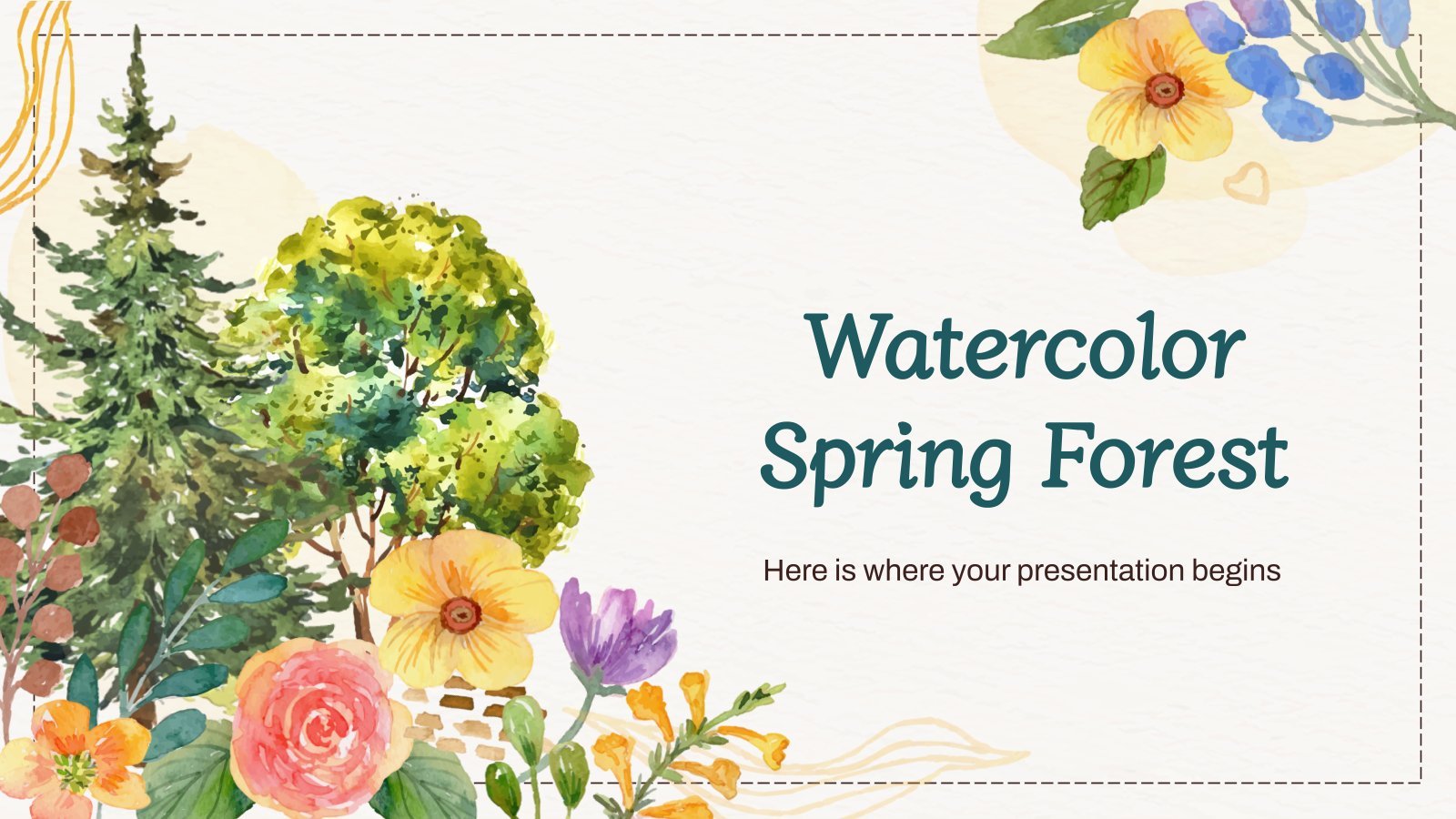
Watercolor Spring Forest
Download the "Watercolor Spring Forest" presentation for PowerPoint or Google Slides and start impressing your audience with a creative and original design. Slidesgo templates like this one here offer the possibility to convey a concept, idea or topic in a clear, concise and visual way, by using different graphic resources....

Herbalist's Shop Business Plan
Medicinal plants exist since prehistoric times! Nowadays, it's all pills and shots, but traditional medicine was based on the use of these plants and its components. Interested in opening a herbal store? There's always room for them! First, download this green-colored template and use its soothing and "natural" design to...

International Mother Earth Day
Download the "International Mother Earth Day" presentation for PowerPoint or Google Slides and start impressing your audience with a creative and original design. Slidesgo templates like this one here offer the possibility to convey a concept, idea or topic in a clear, concise and visual way, by using different graphic...

Agricultural Technician CV
If you are an agricultural technician, but don't know how to organize your CV and want to make an amazing presentation about your education or experience in this area, here you have the ideal presentation to achieve it! We have designed an agricultural technician CV template for you to customize...

Plant-Based Lamb Business Plan
Download the "Plant-Based Lamb Business Plan" presentation for PowerPoint or Google Slides. Conveying your business plan accurately and effectively is the cornerstone of any successful venture. This template allows you to pinpoint essential elements of your operation while your audience will appreciate the clear and concise presentation, eliminating any potential...

Amazon Rainforest Deforestation Awareness
In the world we live, and more and more, it is necessary to raise awareness about the importance of the environment and its preservation. This template is perfect for all those issues related to the natural environment. It contains slides to inform about this problem, locate it, quantify it and...
- Page 1 of 97
New! Make quick presentations with AI
Slidesgo AI presentation maker puts the power of design and creativity in your hands, so you can effortlessly craft stunning slideshows in minutes.

Register for free and start editing online

Importance of Medicinal Plants
Apr 07, 2024
0 likes | 19 Views
This ppt is about what is a medicinal plant, its uses, types, different types of medicinal trees, and different types of medicinal shrubs.
Share Presentation

Presentation Transcript
Importance of Medicinal Plants:
Medicinal trees are:
Medicinal Shrubs are:
- More by User
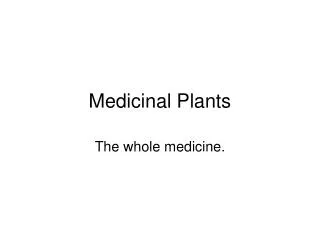
Medicinal Plants
Medicinal Plants. The whole medicine. How many are used?. 75% of the world population depends on traditional herbal medicine In the United state 10% of all prescribed drugs have primary component extract from plant 25% of our common medicine contain some compounds from plants. History.
1.29k views • 33 slides

Collection of medicinal plants
Collection of medicinal plants. Drugs may be collected from wild or cultivated plants. It is known that the active constituents of medicinal plants are affected by many factors and may vary during the course of plant growth. Proper time of collection is very important to obtain a drug of a good quality..
1.27k views • 27 slides
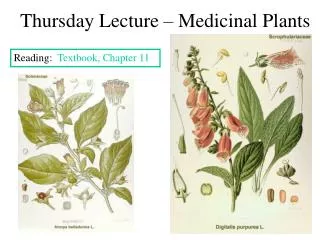
Thursday Lecture – Medicinal Plants
Thursday Lecture – Medicinal Plants. Reading: Textbook, Chapter 11. Margarine – made from fats - originally from animal fats - white in color, so yellow dye added to create appearance of butter Advantage: Stores better than butter Dairy Industry – fought against use of margarine - Taxes
846 views • 40 slides
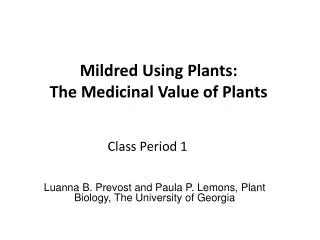
Mildred Using Plants: The Medicinal Value of Plants
Mildred Using Plants: The Medicinal Value of Plants. Class Period 1. Luanna B. Prevost and Paula P. Lemons, Plant Biology, The University of Georgia. Learning Objectives. Name some plants used by humans for medicinal purposes. Explain how plants use the metabolites that humans also use.
479 views • 19 slides
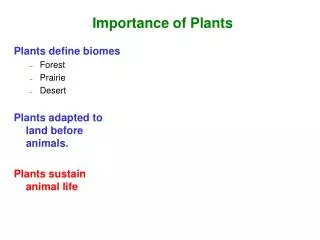
Importance of Plants
Importance of Plants . Plants define biomes Forest Prairie Desert Plants adapted to land before animals. Plants sustain animal life. Evolution of Plant Adaptation to Land. 500M+ years: Moss: nourish embryo 430M years: Ferns: water & nutrient transport
441 views • 19 slides

Medicinal Plants. Outline. Medicine in pre-scientific times Synthetic organic chemistry and medicine Alkaloids glycosides Foxglove (digoxin) Willow bark (aspirin) quinine Ephidrine Schizophrenia and resperine cancer treatment Chapter 19. Plants in Medicine.
1.37k views • 52 slides

Medicinal Plants. Tree Photographs taken at Russell Cave National Monument Bridgeport, Alabama. Native American doctors, called medicine men, used trees, flowers, and other plant parts to cure sicknesses. These plants are called medicinal plants .
2.25k views • 18 slides

Medicinal Plants of the Sonoran Desert
Medicinal Plants of the Sonoran Desert. Arlo Ogden naturalist , historian, park ranger, educator and veteran. Educational Series. Learning Objectives. Following this presentation, participants will: Learn which desert plants maybe beneficial Learn on collection and use techniques
435 views • 22 slides

Course: medicinal plants
Course: medicinal plants. Muhammad Qasim Hayat. Alkaloids . group of naturally occurring chemical compounds that contain mostly basic nitrogen atoms. also includes some related compounds with neutral and even weakly acidic properties Low molecular weight Nitrogenous compounds
1.55k views • 81 slides

Medicinal Plants. David S. Seigler Department of Plant Biology University of Illinois Urbana, Illinois 61801 USA [email protected] http://www.life.illinois.edu/seigler. Outline: Medicinal Plants. Importance o “Primitive” cultures + Link to religion
3.11k views • 90 slides

IMPORTANCE OF PLANTS
IMPORTANCE OF PLANTS. Prepared by MPL. P lants. Plants take in carbon di oxide and leave out oxygen during the day. We get medicines from plants. Plants give us wood for furniture & fire wood. We get pulses from plants. We get nut & oil from plants. We get cerials from plants.
5.95k views • 12 slides

Introduction of medicinal plants
Introduction of medicinal plants. Part (I) : The Leaf. I- Introduction. II- Examples. I- Introduction of leaf. 1- Definition. 4- leaf structure. ● Morphology ● Histology. Introduction of Leaves. 3- Types of leaves. 2- Phyllotaxis. Introduction of leaf. ● Definition
4.06k views • 73 slides

medicinal plants of peru
People choose Ayahuasca for a variety of reasons, including treatment of depression or addiction, for spiritual reasons, physical ailments, post-traumatic stress disorder and other psychological issues. If you’d like to know more about the benefits of Ayahuasca, visiting sourceperu.com is a good place to start.
228 views • 4 slides

Medicinal Plants in India
Buy variety of medicinal plants online at Ferns N Petals includes Basil, Bay, Coriander, Oregano etc. The Herbal plants are helpful in purifying air and keaps you healthy and free from Diseases. Browser for more herbs and kitchen plants.
187 views • 9 slides
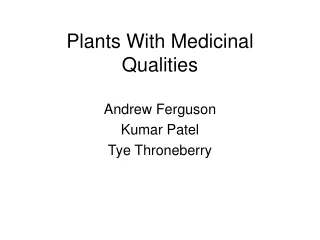
Plants With Medicinal Qualities
Plants With Medicinal Qualities. Andrew Ferguson Kumar Patel Tye Throneberry. Ginkgo biloba. Ginkgo biloba is one of the most commonly used herbal medicines in the world. It has been used for thousands of years in China.
410 views • 36 slides
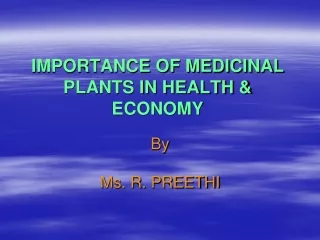
IMPORTANCE OF MEDICINAL PLANTS IN HEALTH & ECONOMY
IMPORTANCE OF MEDICINAL PLANTS IN HEALTH & ECONOMY. By Ms. R. PREETHI. WORLD IN 21st CENTURY. 100% increase in World’s population (12 billion by the year 2035). 50% reduction in forests cover. Life expectancy close to 100 years in most parts of the world.
298 views • 19 slides

Introduction and Importance of Medicinal Plants and Herbs
They supplement or healthcare herbal capsules and syrup online tamilnadu can be added to the diet and may not be considered a substitute for food. For Best Herbal Capsules & Syrup, contact: https://sairamhealthcare.net/
301 views • 7 slides

PDF Australian medicinal plants
COPY LINK TO DOWNLOAD : https://slideservehome.blogspot.com/?vivi=0454004389 | Download Book [PDF] Australian medicinal plants | Quarto, Hardcover, 1984, PP.240, Color Photos, Clear Descriptions In Everyday Language
6 views • 6 slides

IMAGES
VIDEO
COMMENTS
• Medicinal plants are plants that have a recognized medical use. • Their use ranges the production of mainstream pharmaceutical products to herbal medicine preparations. • Herbal medicine is one of the oldest forms of medical treatment in human history and could be considered one of the forerunners of the modern pharmaceutical trade.
Presentation Transcript. Medicinal Plants. Outline Medicine in pre-scientific times Synthetic organic chemistry and medicine Alkaloids glycosides Foxglove (digoxin) Willow bark (aspirin) quinine Ephidrine Schizophrenia and resperine cancer treatment Chapter 19. Plants in Medicine • The idea of using plants for healing goes back to very ...
Free Google Slides theme, PowerPoint template, and Canva presentation template. An herb is a plant or part of a plant that is used for its aroma, flavor, or therapeutic properties. Herbal medicine products are supplements sold as pills, capsules, powders, teas, extracts, or as fresh or dried plants, and are used to improve health. We've ...
About This Presentation. Title: Medicinal Plants. Description: Prehistoric times No one knows where or when plants first began to be used to treat disease Accidental discovery of some new plant food that eased pain might have ... - PowerPoint PPT presentation. Number of Views: 25087. Avg rating:3.0/5.0.
What is Medicinal plant ? Medicinal plants are plants that have a recognized medical use. Their use ranges the production of mainstream pharmaceutical products to herbal medicine preparations. Herbal medicine is one of the oldest forms of medical treatment in human history and could be considered one of the forerunners of the modern pharmaceutical trade.
Transcript: Medicinal Plants is Aloe Vera Thank you for your attention Aloe vera is used in traditional medicine as a multipurpose skin treatment. In Ayurvedic medicine it is called kathalai, as are extracts from agave. Early records of Aloe vera use appear in the Ebers Papyrus from the 16th century BC,18 and in Dioscorides' De Materia Medica ...
Collection of medicinal plants. Collection of medicinal plants. Drugs may be collected from wild or cultivated plants. It is known that the active constituents of medicinal plants are affected by many factors and may vary during the course of plant growth. Proper time of collection is very important to obtain a drug of a good quality..
A medicinal plant is any plant which, in one or more of its organs, contains substances that can be used for therapeutic purposes or which are precursors for the synthesis of useful drugs. ... A definition of medicinal plants for the purpose of this presentation should include the following (Sofowora 2008; Evans, 2008): plants or plant parts ...
Our medicinal plants PPT templates are for anyone who wants to make interesting presentations. If you're a student, worker, teacher, or just really interested in health, our slides are for you. You can use them in many places like classrooms, meetings, learning sessions, and even online.
Native American doctors, called medicine men, used trees, flowers, and other plant parts to cure sicknesses. These plants are called medicinal plants . Download Presentation. national monument. spring. chestnut oak. black walnut tree. most doctors today. brown bark.
69 Best Medicinal Plant-Themed Templates. CrystalGraphics creates templates designed to make even average presentations look incredible. Below you'll see thumbnail sized previews of the title slides of a few of our 69 best medicinal plant templates for PowerPoint and Google Slides. The text you'll see in in those slides is just example text.
Free Download Medicinal Plants PowerPoint Presentation. De Materia Medica Descriptions of plants, directions on the preparation, uses, and side effects Many still in use willow bark tea - precursor to aspirin Some have been lost Greek and Roman women used silphium as an effective contraceptive for 1,000 yrs - now extinct Standard medical reference for 1500 years Little new knowledge was added ...
Bio Technology Powerpoint Ppt Template Bundles. Slide 1 of 13. Dna research laboratory parallel isolation operating biotechnology structure. Slide 1 of 36. Biotechnology firm elevator pitch deck ppt template. Slide 1 of 6. Scientist testing plant in biotechnology lab. Slide 1 of 2. Laboratory of botany department to study plants.
Introduction of leaf Types of leaves: 1- Cotyledons (seed-leaves): Found on embryonic plants in the seed For storage of food. 2- Prophylls: First leaves borne on a branch Simpler in structure than ordinary leaves. 3- Foliage leaves: Ordinary green leaves Primary location of photosynthesis.
Download 78 herbal plant Presentation Templates unlimited times with PoweredTemplate premium subscriptions. Top . Presentation Templates PowerPoint Templates; Google Slides Themes; ... Aloe Plant PowerPoint Template By PoweredTemplate. 4.6 of 5 (639) 806 Save. Similar. Homeopathic Remedy PowerPoint Template By PoweredTemplate. 4.6 of 5 (976) 1 ...
Medicinal plants exist since prehistoric times! Nowadays, it's all pills and shots, but traditional medicine was based on the use of these plants and its components. ... Download the "Garden Week" presentation for PowerPoint or Google Slides and start impressing your audience with a creative and original design. Slidesgo templates like this one ...
Presentation Transcript. Medicinal Plants The whole medicine. Golden age of Greece • Hippocrates (460-377 BC) - father of medicine, rational approach to treatment and documented illness and treatment, identified about 300-400 effective medicinal plants • Aristotle and Theophrastus (Aristotle's best pupil)- compiled list of medicinal plants ...
This ppt is about what is a medicinal plant, its uses, types, different types of medicinal trees, and different types of medicinal shrubs. Slideshow 13086629 by Sri117. ... During download, if you can't get a presentation, the file might be deleted by the publisher. E N D . Presentation Transcript. Importance of Medicinal Plants: Medicinal ...